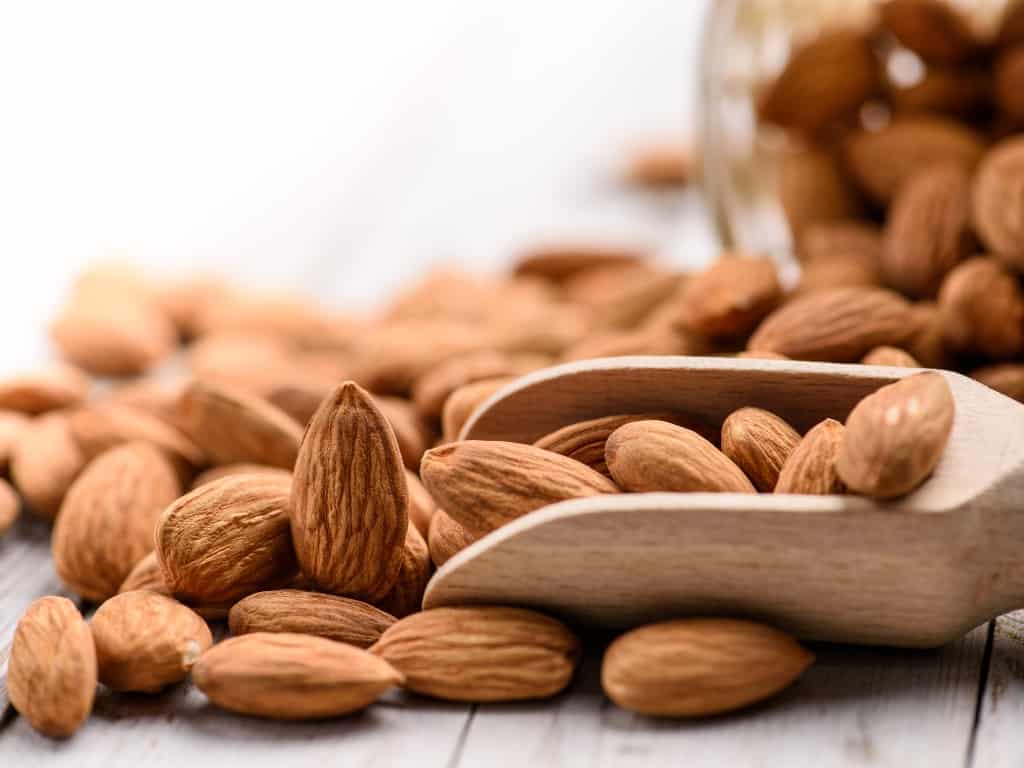Looking for brown things in nature? Here’s a comprehensive visual list of the most beautiful things that are brown. Specifically, naturally brown things, unaltered by human intervention.
Brown is an earthy color that is closely related to nature. Wood, earth, or sand are just a few things that come to mind.
It is the color that conveys comfort.
That’s why we’ve created a comprehensive visual list of naturally brown things – without human intervention.
Today’s article will discuss brown things, including foods, plants, or animals that are naturally brown.
What is Linked to Brown?
Brown, the color of earth and wood, is associated with simplicity, stability, dependability, and honesty.
Therefore, it is as solid as earth. It is said to bring you down to earth.
Furthermore, brown things are associated with nature and evoke feelings of warmth and comfort.
List of Things That Are Brown
Brown Things
Sand

The isolation of desert sand or the warmth of sandy beaches? Who doesn’t like sandy beaches? Its color relaxes us because brown symbolizes comfort. The sand is a light brown color, similar to Tan. Its brown comes from feldspar – which ranges from brown to tan, and iron oxide – which is light brown. This is what makes sand brown.
On the other hand, beach sand is lighter in color than desert sand because it is dissolved or washed away by salty water.
Brown leaves
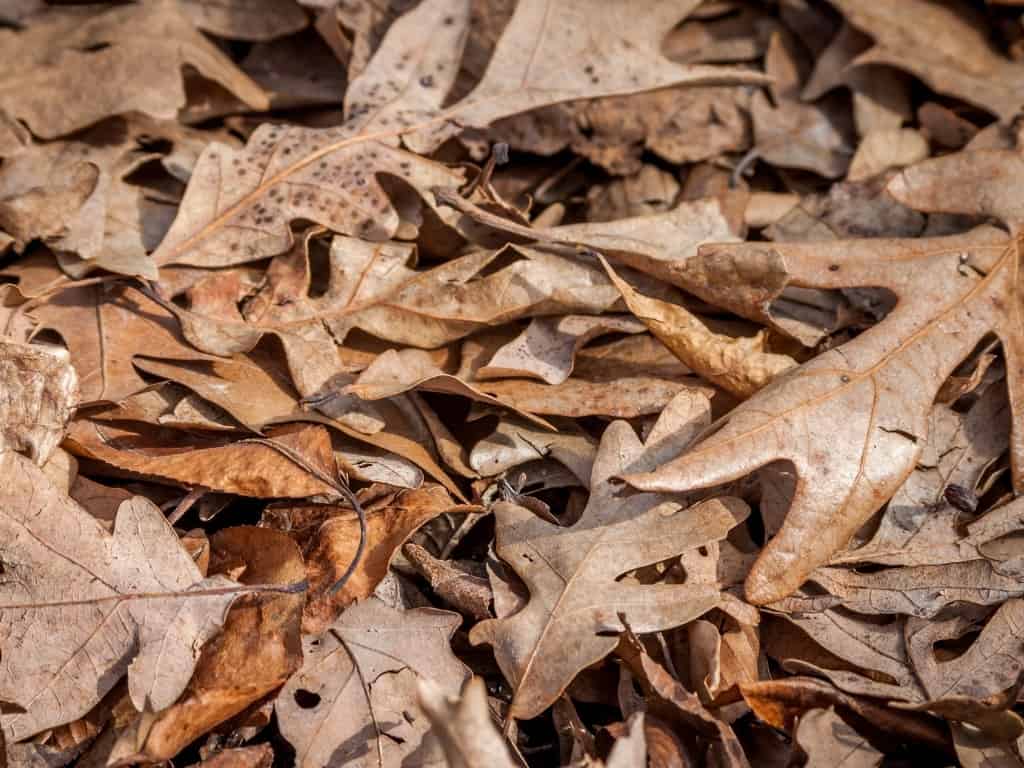
Leaves change color from green to brown due to a lack of chlorophyll. The pigment chlorophyll is responsible for the green color of leaves.
Moreover, it aids in photosynthesis, which allows them to produce food.
So, as the days get shorter and temperatures drop, trees begin to prepare for winter by dropping their leaves.
During this process, trees withdraw nutrients from their leaves and store them in branches and trunks, leaving the leaves to wither and fall.
The brown color of the leaves also comes from other pigments, such as carotenoids and anthocyanins, which become more visible once the green chlorophyll disappears.
Tree trunks
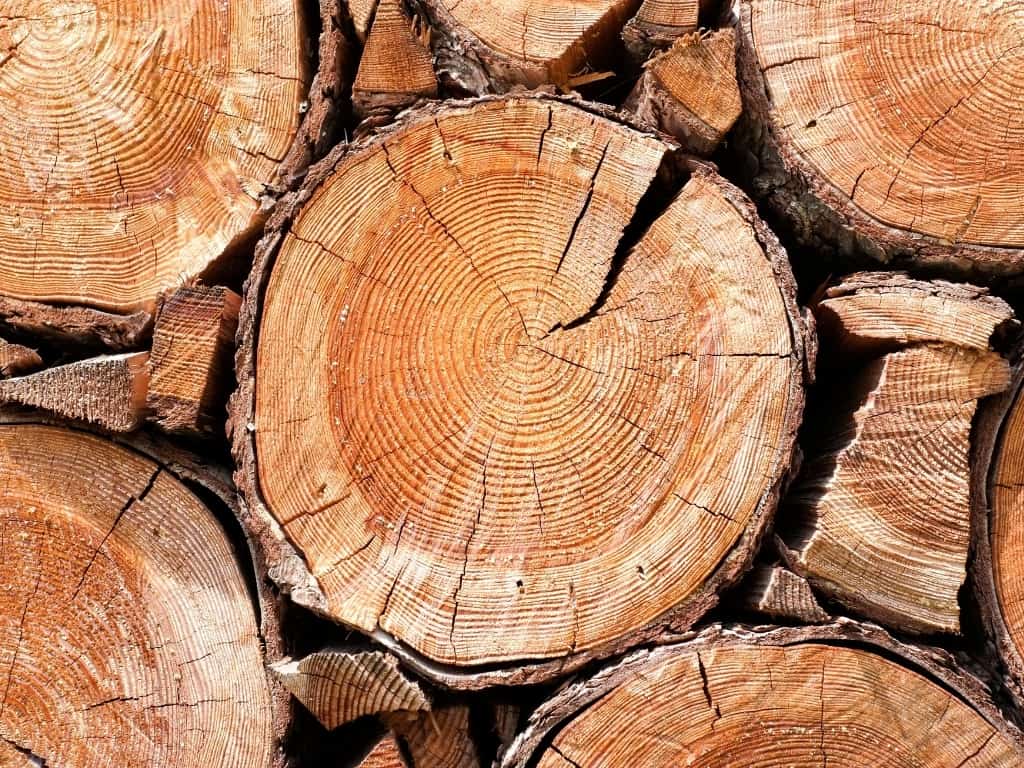
The tree trunk has several layers, and the bark protects the tree from external factors such as diseases, insects, and weather.
Although this is the outer layer, it is followed by the phloem, cambium, and xylem. That is why the different layers appear as concentric circles when a tree is cut down.
Chocolate diamonds
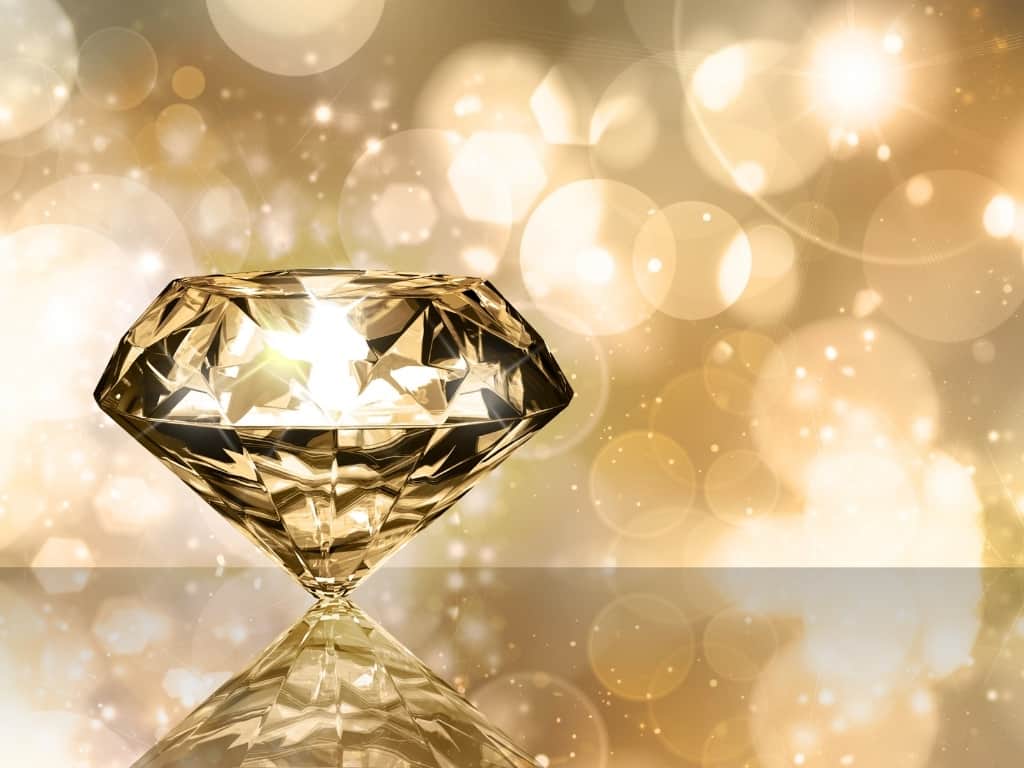
Chocolate diamonds are genuine diamonds that get a rich brown hue by compressing graphite under extreme pressure and heat to above 2700° Fahrenheit (1500°C).
Following this “annealing” process, the diamonds acquire this brownish hue. Hence, they are known as brown diamonds, and fancy names are used for marketing.
These diamonds were once considered low quality or undesirable. Still, they have gained popularity in recent years for their warmth and richness.
Smoky quartz
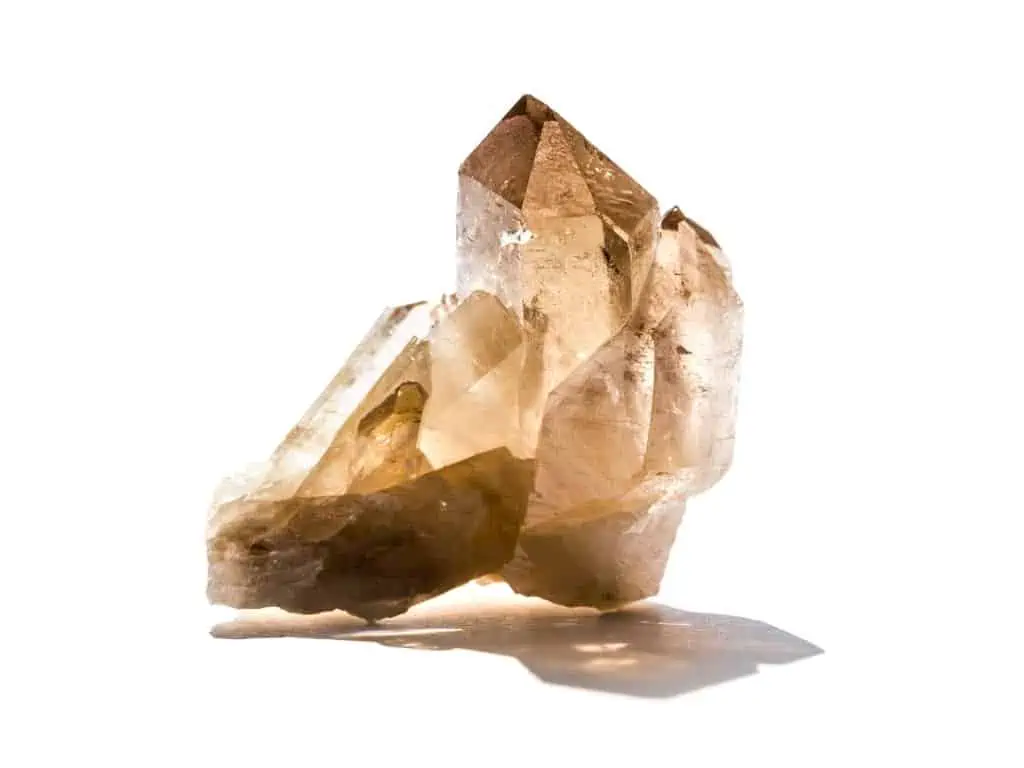
Smoky quartz is a brownish-gray gemstone with a hardness of 7 on the Mohs scale. The color of smoky quartz is caused by natural radiation exposure. This gives smoky quartz its color, ranging from light gray-brown to almost black.
Smoky quartz is said to help ground and release negative energy, as it was associated with the symbolism of the color brown. Thus it offers a sense of stability and comfort.
Brown eyes

More than 50% of the population have brown eyes, the most common color in the world. This is because the genetic trait for brown eyes is dominant. [1]
The brown color of the eyes is caused by the presence of a pigment – melanin – in the eye’s iris. Thus, the amount of pigment in the iris determines the shade of brown. This can range from a light hazel to dark chocolate brown.
Brown hair
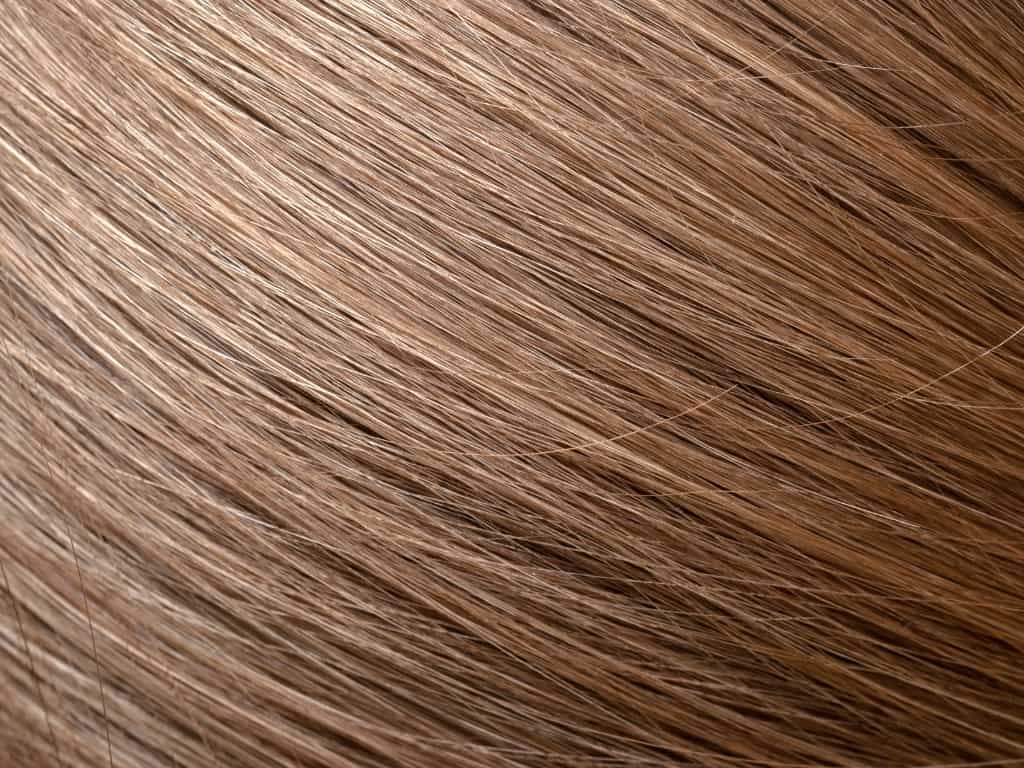
Brown hair, which is found in 11% of the population, is the second most common hair color.
As with brown eyes, the brown color comes from the pigment melanin, produced by specialized cells called melanocytes in the hair follicle. Depending on the amount and type of melanin, the shade can vary.
Brown skin
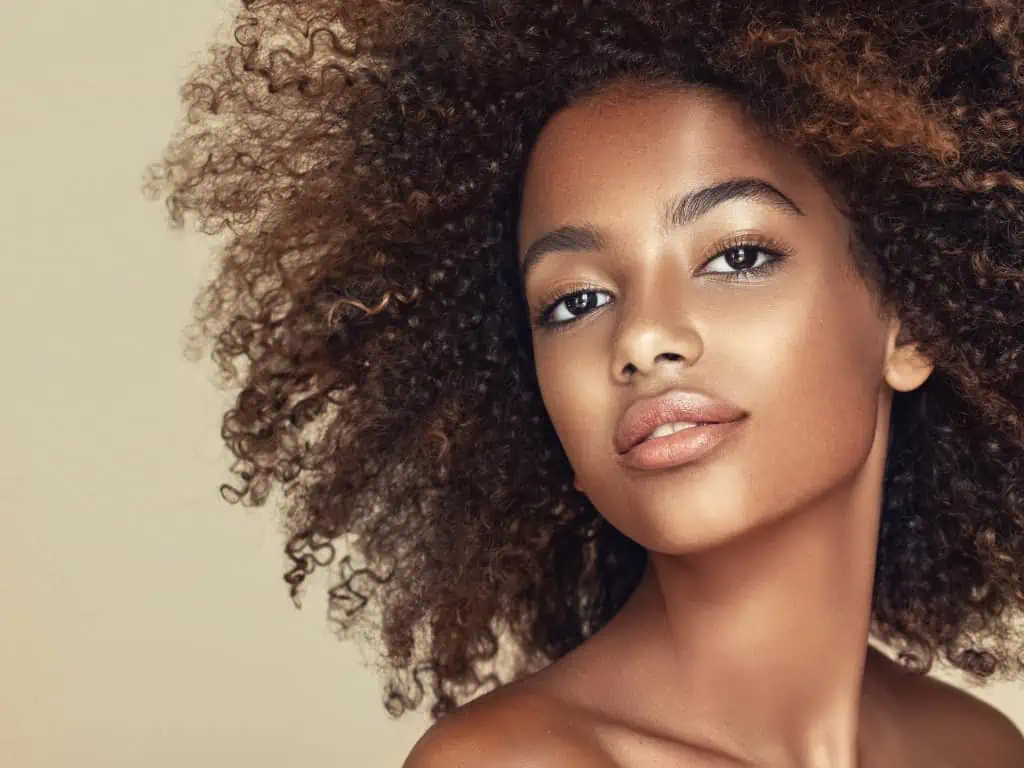
Brown skin is caused by the presence of an increased amount of melanin produced by melanocyte cells through a process called melanogenesis.
Brown soil

The earth’s color comes from a mix of organic matter, minerals, and other materials that give it its brown color.
Minerals include iron, manganese, and calcium. These can contribute to the brown color of the soil.
Iron oxide gives the soil a reddish-brown color, while manganese oxide can make it blackish-brown.
Basically, the earth’s brown color is actually the soil color, the upper layer of earth.
Brown soils are soils drained by brown subsoils rich in iron oxides that lie beneath the first layer of soil known as the O Horizon. This is the top layer, which is composed of humus (decomposed organic matter).
Mud
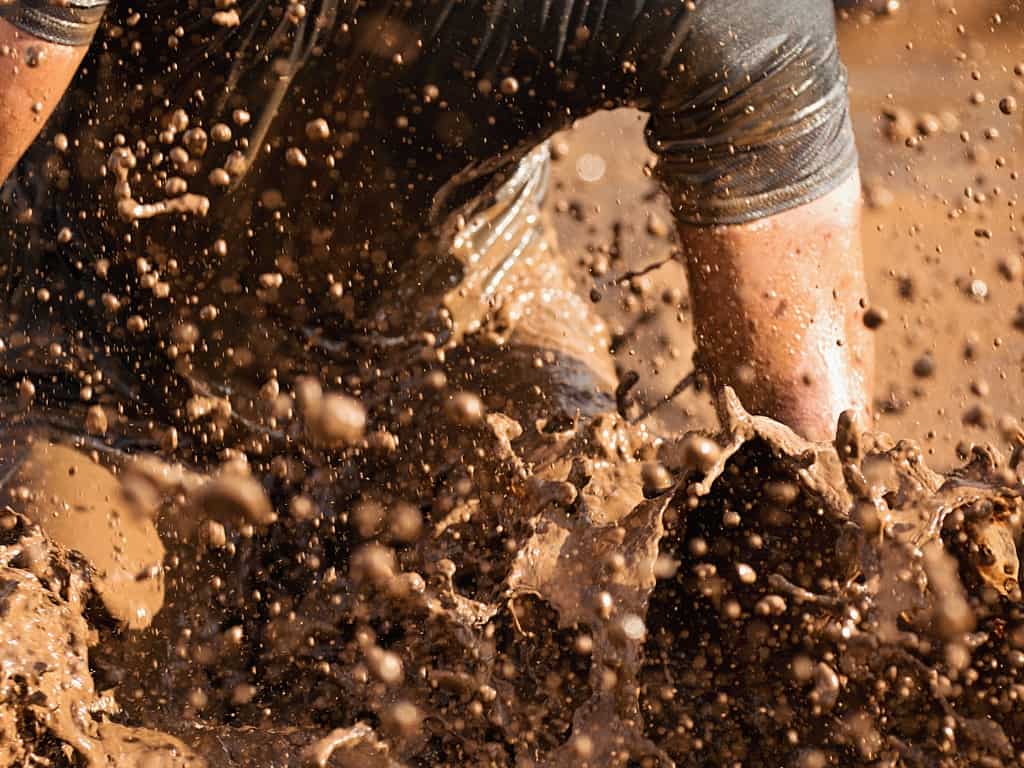
The mud is created by combining water with topsoil, composed of humus and various minerals. Thus, the mud turns brown when the A horizon soil is rich in iron oxides.
Brown Fruits
Fruits’ natural brown color and the browning of cut fruits have something in common: the presence of polyphenols that lead to melanin production.
Some fruits turn brown due to a process called enzymatic browning. This happens when oxidized polyphenol enzymes interact with oxygen in the air. This reaction results in the formation of melanin, a brown pigment that gives fruits their brown color.
When fruits are cut, these enzymes are exposed to oxygen, and the resulting reaction can turn the fruit brown.
Here are the most popular brown fruits and vegetables.
Chestnuts
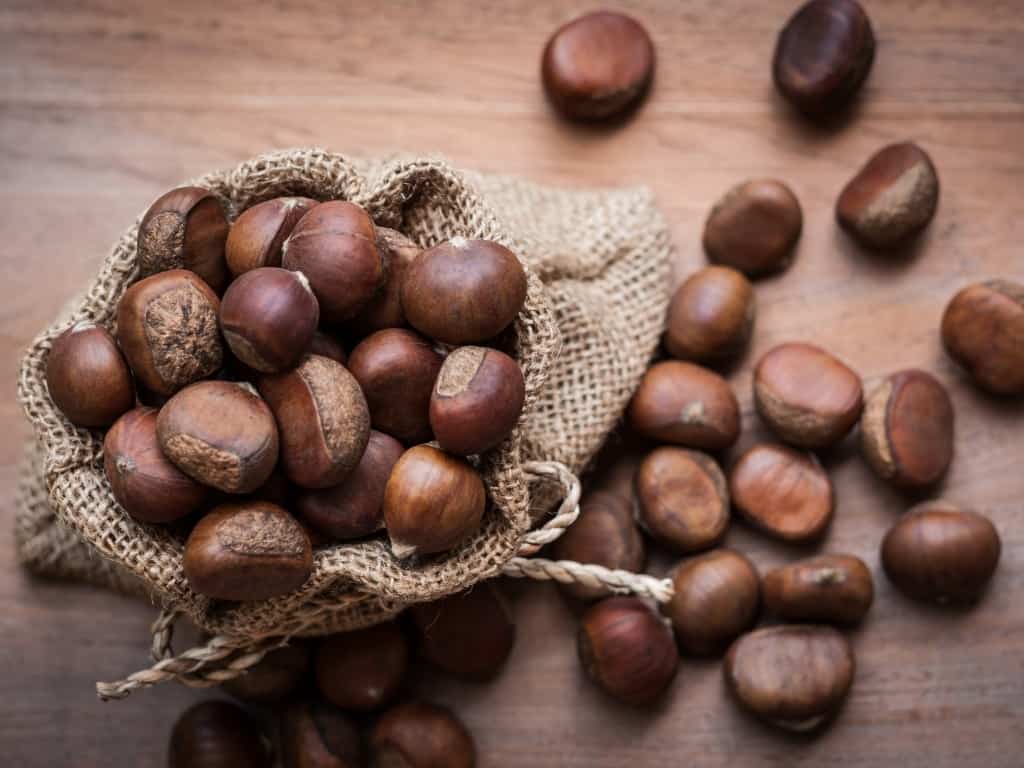
Chestnuts are the nuts of the chestnut tree, which grow in temperate areas of the northern hemisphere and have a reddish-brown hue. However, the shell is not edible; only the kernel is consumed.
In addition, they are an excellent source of antioxidants and are delicious when roasted.
Almonds

Almonds are from the same family as all nuts and have a brownish peel. This is developed by the almond tree for the seeds to germinate.
Walnuts
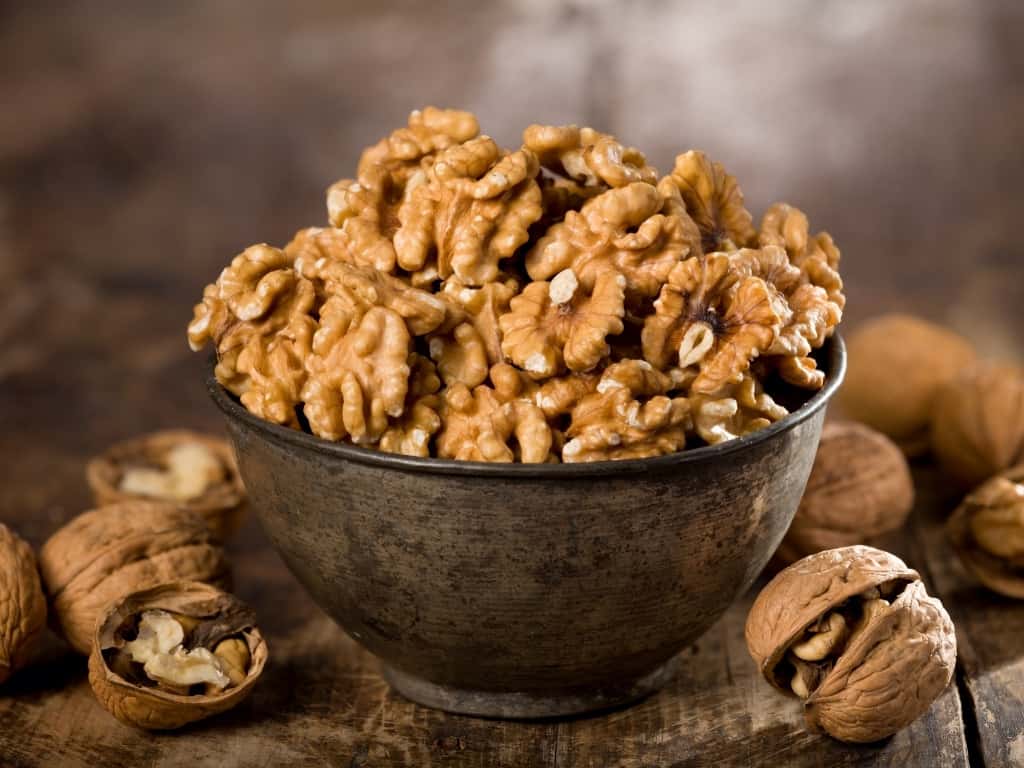
Almonds are higher in protein, carbohydrates, and fiber than walnuts. What’s more, they are much richer in vitamin E.
Almonds are considered the healthiest nuts in the world. Additionally, they are rich in heart-friendly monounsaturated fat and contain the highest calcium content of a nut. [2]
Kiwis
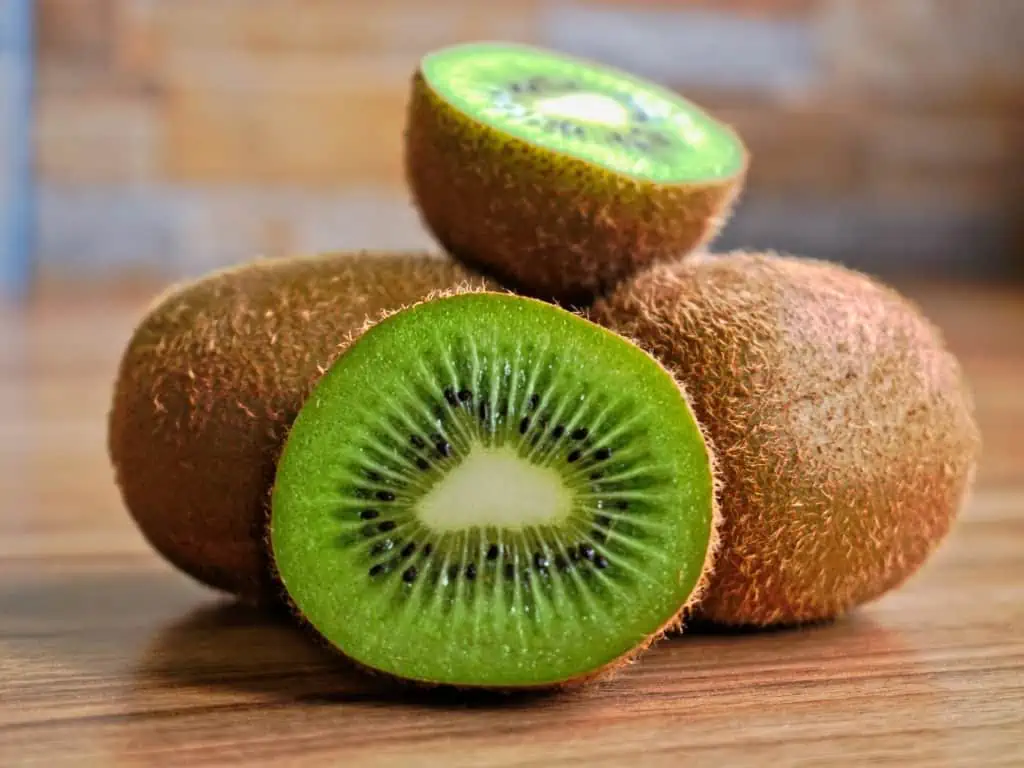
Kiwi fruits are some of the most delicious brown things you’ll find in nature. These delicious fruits are brown on the outside with a fuzzy skin, but once you peel them open, you’ll see their bright green flesh inside.
So why are they brown on the outside? It’s actually due to the tiny hairs on their skin, which help protect the fruit from pests and damage.
But don’t let their brown exterior fool you. Not only are kiwis full of flavor and nutrition, but they’re also loaded with vitamin C, vitamin K, vitamin E, fiber, and potassium. What’s more, they help support heart and digestive health. [3]
Cassava
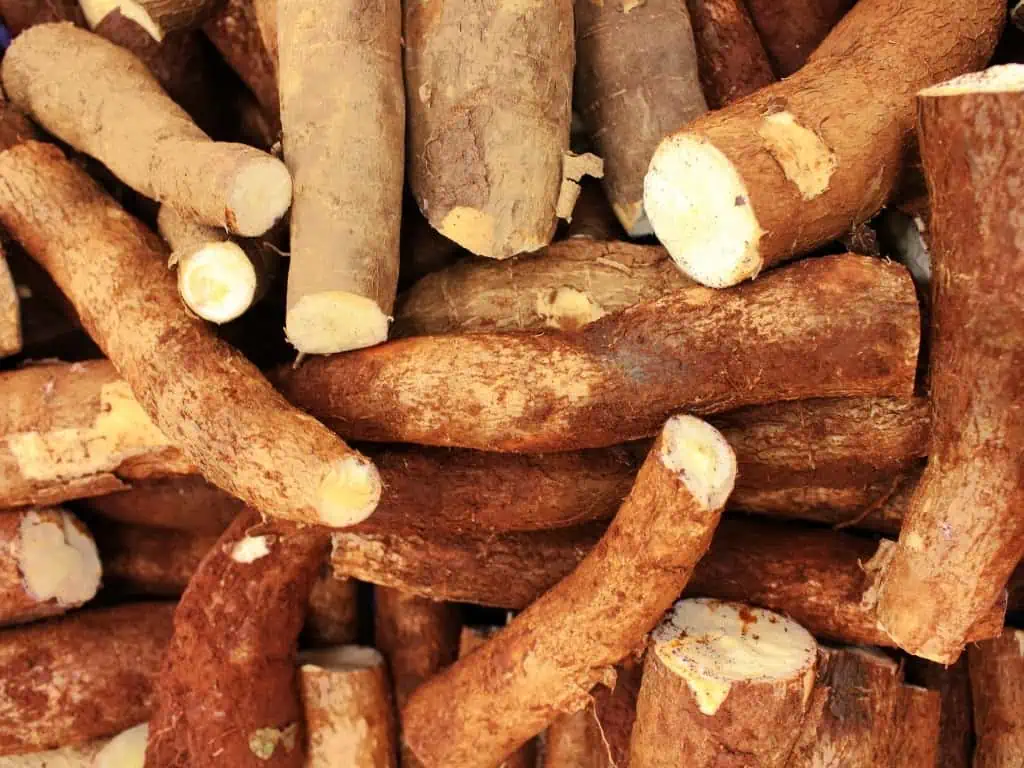
Casava, also known as Manioc, is a tropical plant whose roots yield tapioca flour. It is basically starch extracted from the cassava root.
Moreover, cassava is considered the potato of the black continent because of its high carbohydrate (starch) content roots. Hence the brownish color of the outside.
Brown beans
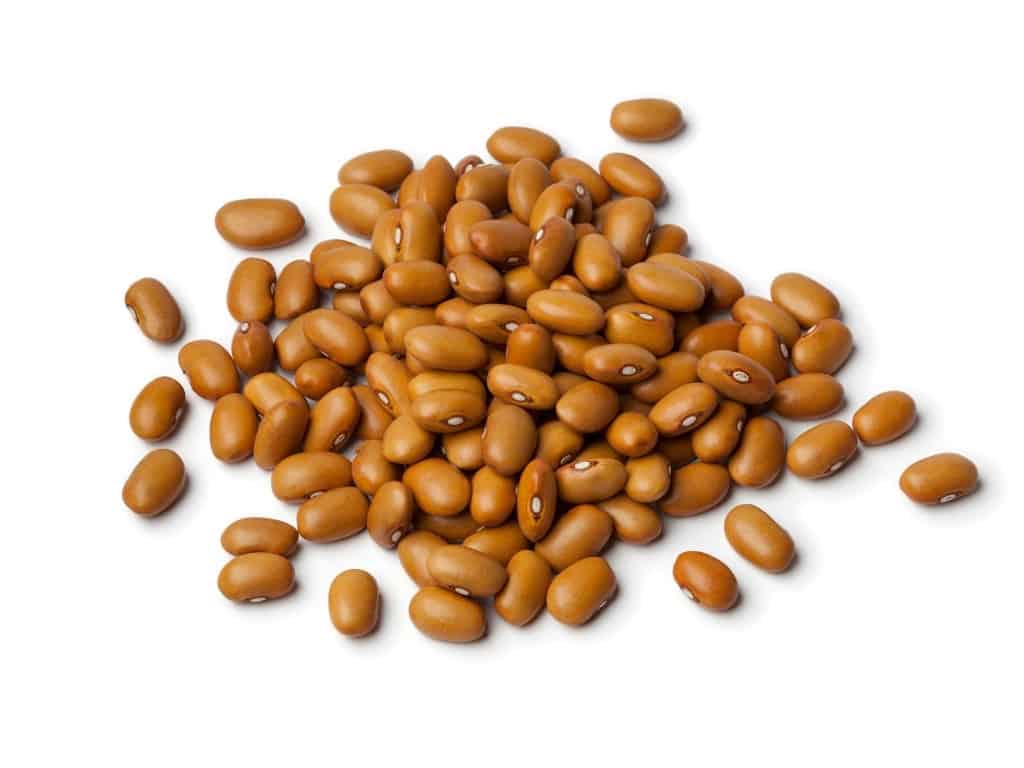
Part of the leguminous family, beans are low in fat and full of nutrients, vitamins, and minerals. It comes in many colors, such as white, brown, red, or black.
Varieties with brown beans are Adzuki, Kidney, and Pinto (brownish beans closer to tan).
Pecans
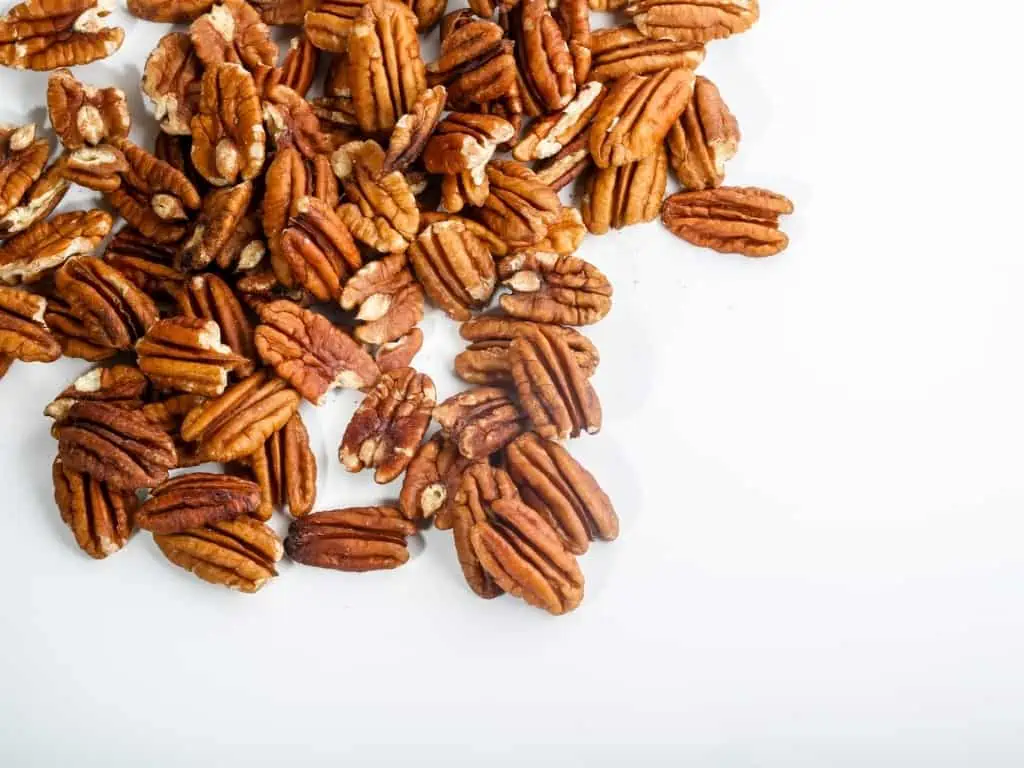
Pecans are the product of the hickory tree, also known as Carya illinoinensis, native to Central and North America.
Pecans were used as a food source by Native Americans for centuries before the arrival of European settlers.
Unlike most varieties of nuts, which are rich in Omega-6, pecans contain a balanced amount of anti-inflammatory Omega-3 fatty acids.
Flax seeds
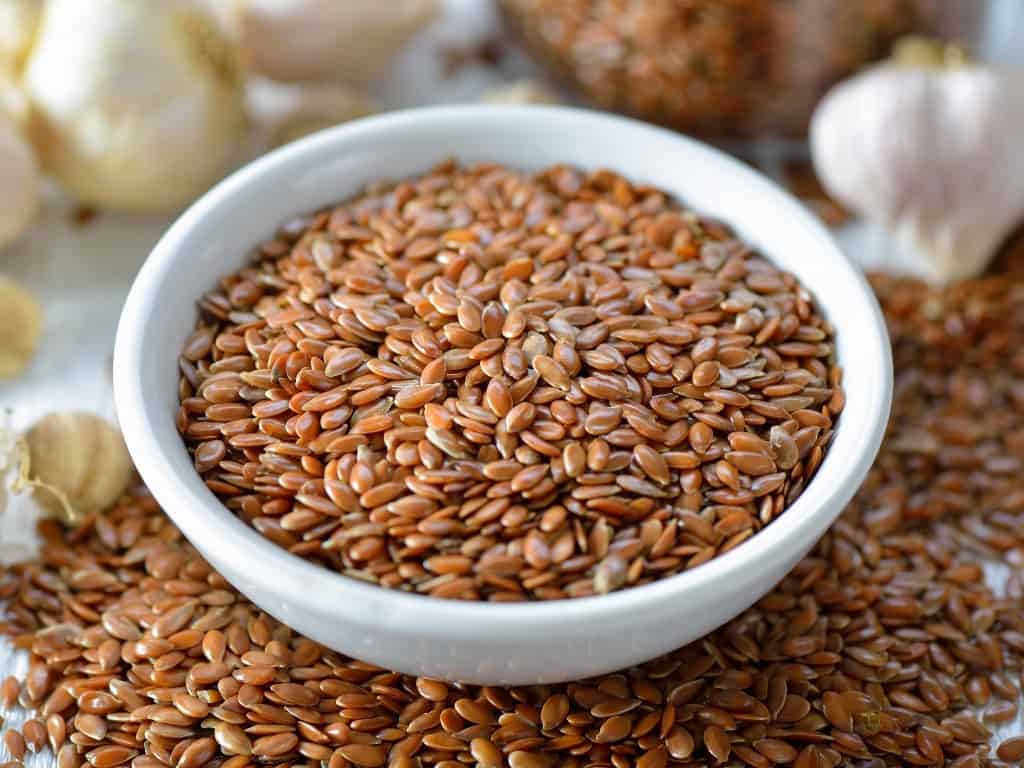
Flax is a plant that has been cultivated since 30,000 years ago for its seeds, from which even oil is made.
Flax seeds have a hard brown outer coating, and if they are not soaked in water, they can pass undigested through the intestine, which means their nutrients are not fully absorbed.
However, there are 2 types of flax seeds: brown and golden.
Brown flax seeds are tastier and contain more antioxidants than golden flax seeds. They also have fewer polyunsaturated fatty acids than golden ones.
Cupuacu
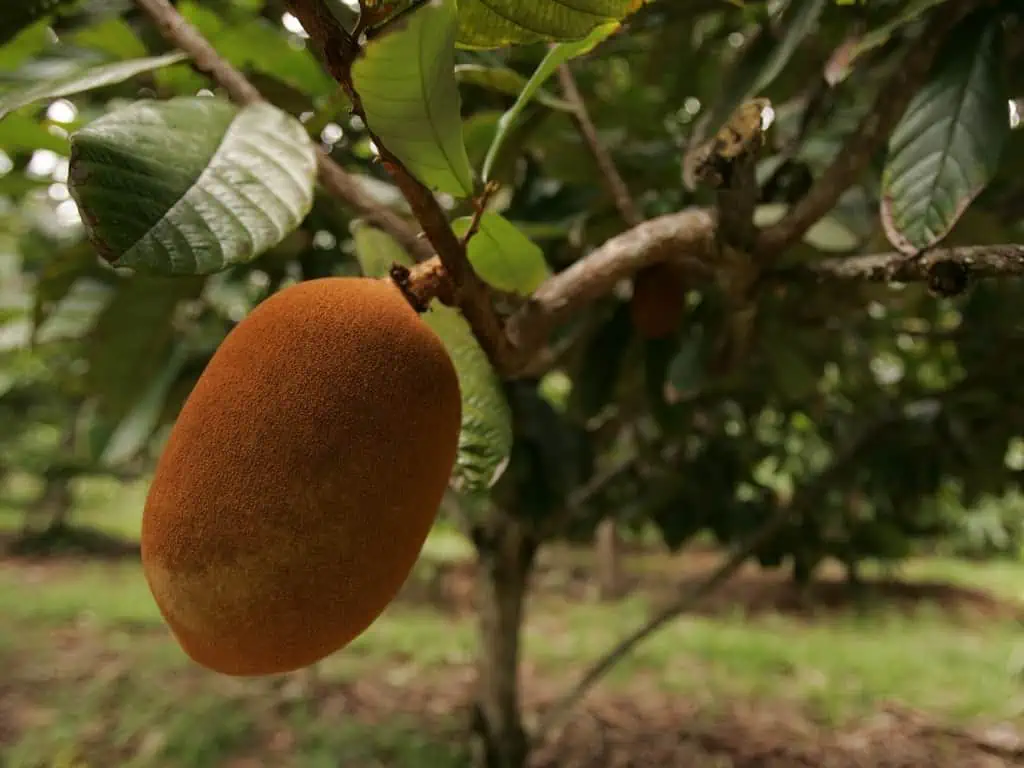
Cupuacu (known as cupuassu) is a chocolaty fruit of the Cupuaçu tree, which is related to the cacao tree and is native to the Amazon basin.
The fruit’s name translates as “food of the gods,” and it’s not surprising why. This brown-rumped, fleshy pulp fruit is very rich in fatty acids, and has the consistency of cocoa butter.
Its delicious creamy white flesh is also rich in vitamins (A, B1, B3, C, and E), antioxidants, and a unique polyphenol known as theograndin.
Brazil nuts
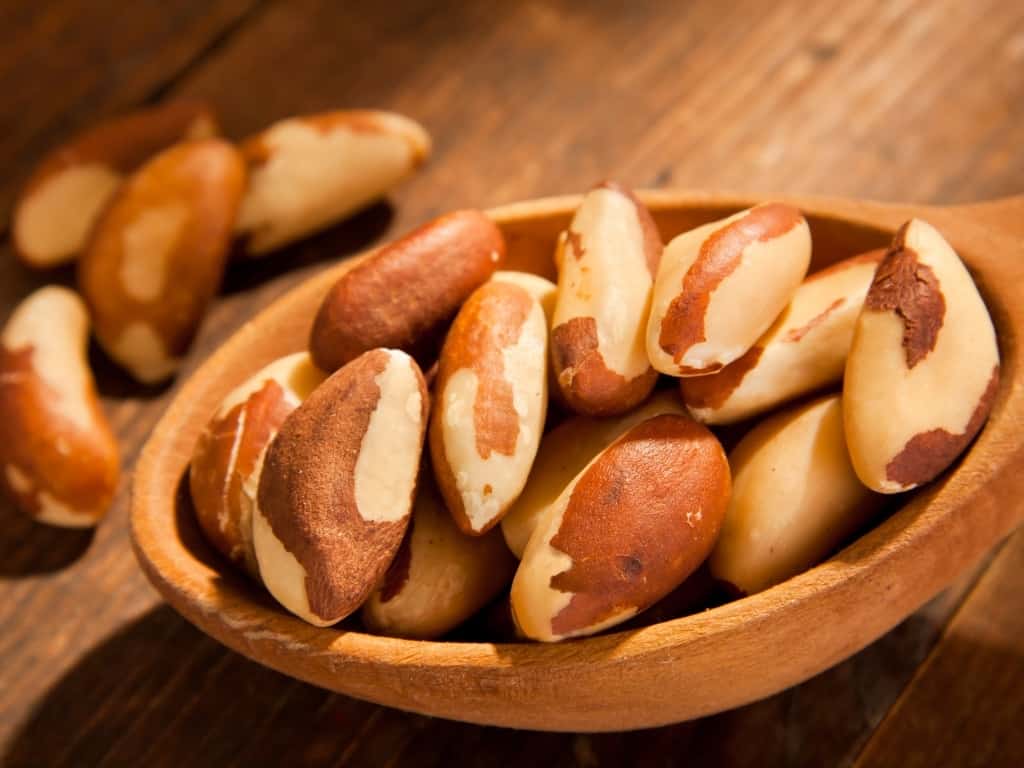
As the name suggests, these nuts are native to South America and grow in the tree of the same name.
This is one of the largest trees in the Amazon rainforests. It can grow up to 200 feet.
Despite its name, the biggest exporter of Brazil nuts is Bolivia.
Coconut

As its name implies, the coconut is the fruit of the coconut tree, a palm tree family member. So, technically, the coconut is a fruit, not a nut.
Coconut benefits health by containing many nutrients such as copper, iron, selenium, phosphorus, magnesium, potassium, and zinc.
When young, coconuts are green but turn brown as they mature.
The husk of the mature coconut is brown, but the kernel is milky white, and it has a delicious taste. Inside the nut is fresh coconut water.
Interestingly, if the coconut water is exposed to the environment for too long, it oxidizes and turns brown. This oxidation is caused by phenolic oxidation, caramelization, and the Maillard reaction.
Brown mushrooms
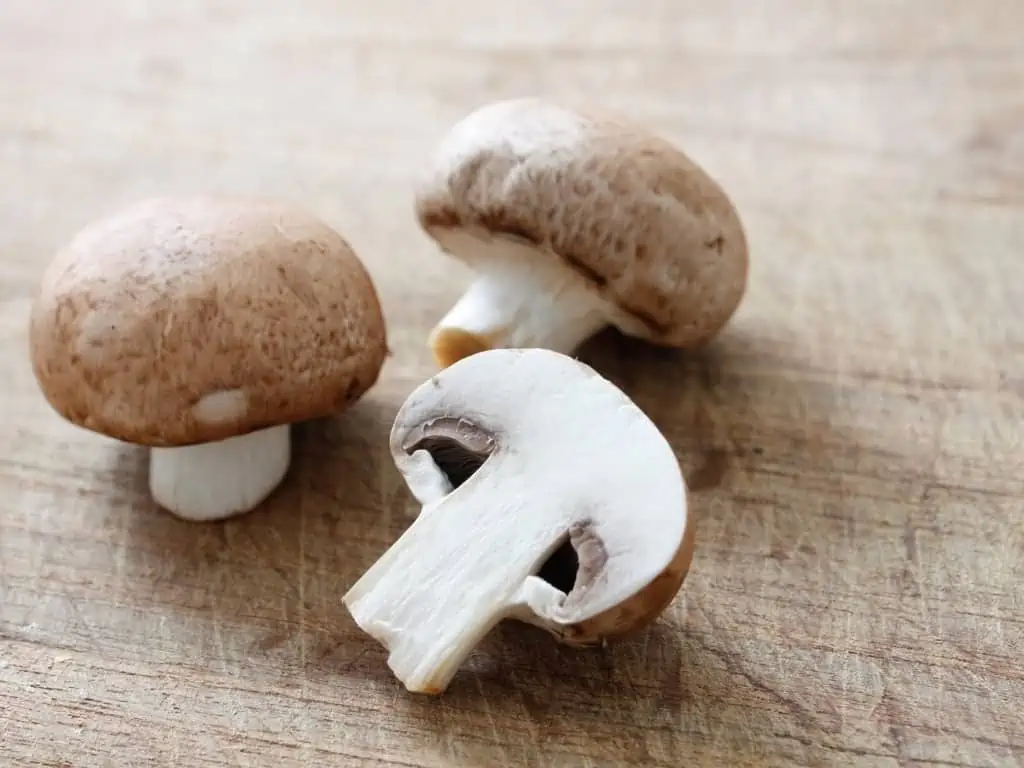
The brown mushrooms are known as Cremini mushrooms or swiss brown. Unlike white mushrooms, they have more flavor. They have a dense and meatier texture with a slightly nutty taste. Moreover, brown mushrooms are edible and similar in size to white mushrooms.
Because they have a richer and more complex flavor than white mushrooms, brown mushrooms are considered tastier.
Coffee beans
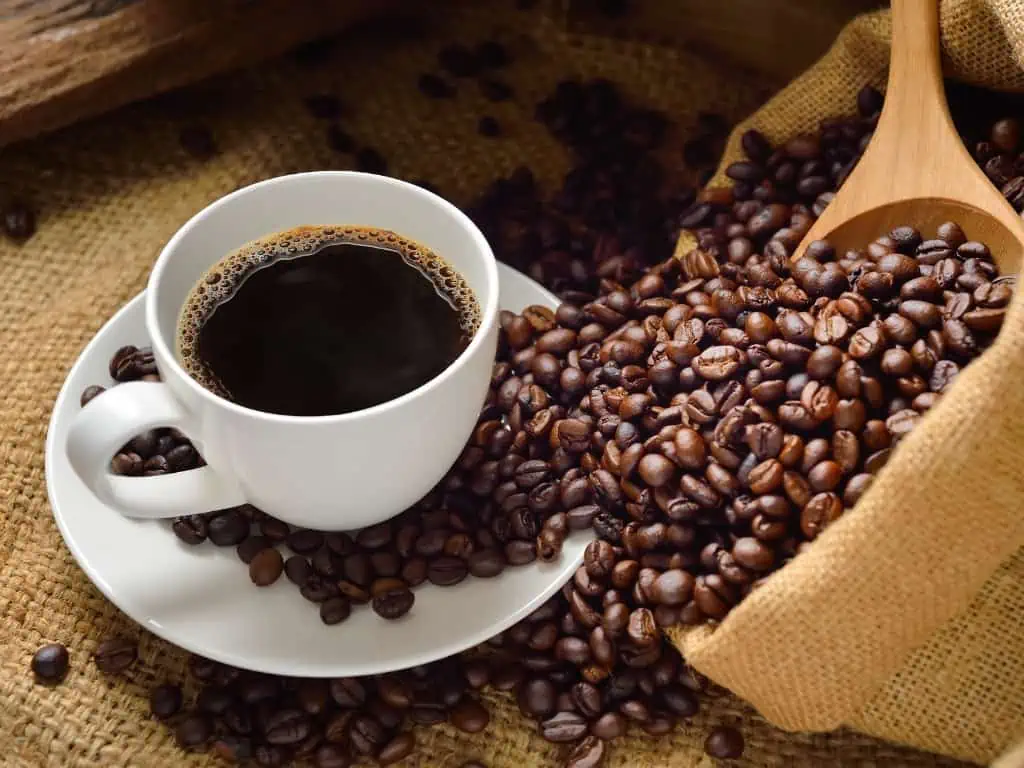
The coffee bean, brown in color, is the seed of the coffee plant. It is roasted and ground into the coffee beans we all use to make coffee. Specifically, it is the seed inside the fruit of the coffee plant.
Brazil is the world’s largest coffee producer. However, there are four types of coffee with different flavors, and the most popular are robusta and arabica.
Arabica has a smoother, sweeter taste with hints of chocolate and sugar. Furthermore, it may have fruity or berry notes. Robusta, on the other hand, tastes stronger, more bitter, and harsher with more caffeine.
Robusta is usually cheaper than Arabica because the Robusta coffee tree is easier to look after and more resistant to adverse weather conditions and disease.
Brown Flowers
Brown orchid
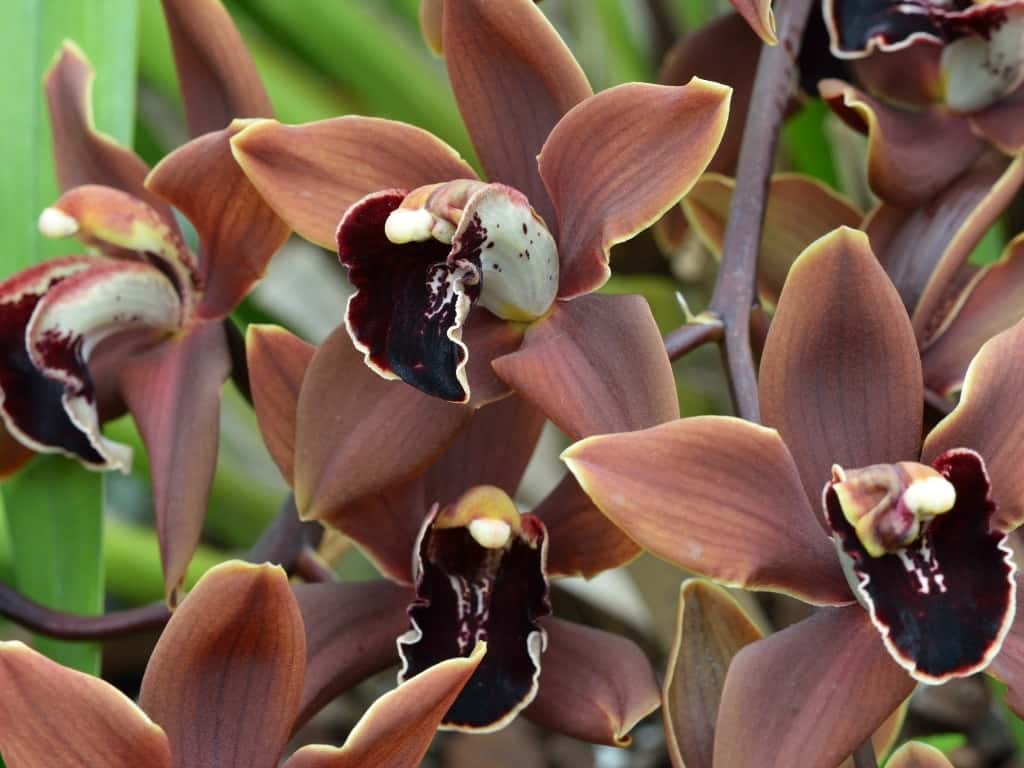
Orchids are lovely tropical flowering plants of the species Orchidaceae, which bloom in many colors. However, four species live in the Arctic Circle. There are over 28,000 species in the orchid family, making orchids among the oldest flowering plants.
Brown Animals
Melanin, like in fruits, is responsible for the animals’ brown color. Thus, this pigment is found in all forms of life.
Brown bear
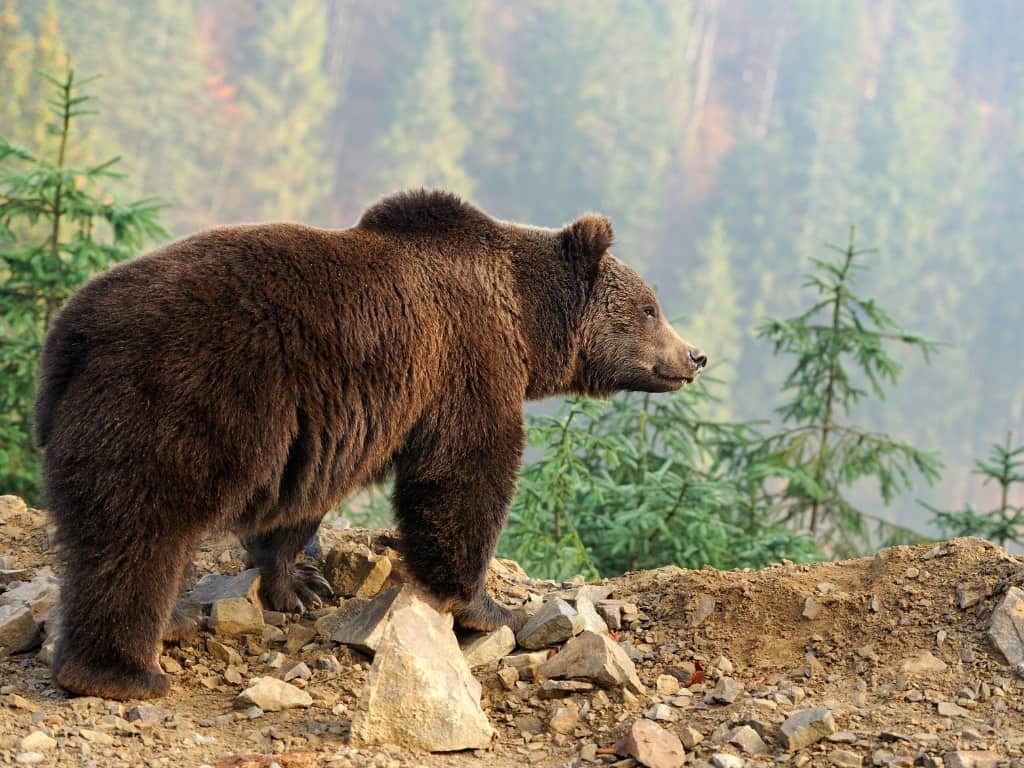
The brown bear, the world’s most common bear, is an omnivorous mammal that lives in the mountains of northern North America, Europe, and Asia.
It can reach a weight of up to 700 pounds and a size between 5 and 8 feet. The largest brown bear can be found in Alaska and British Columbia. [4]
Like the grizzly bear, the brown bear is part of Ursus arctos. The difference between them is their geographical location, which influences their diet and behavior.
The brown bear, although it looks fierce, is not malicious. It is usually shy and retiring, trying to avoid contact with humans as much as possible. However, survival instincts may cause them to approach food sources near populated areas.
Oh, and by the way, The brown bear is the largest predator in Europe.
Burrowing owl

The burrowing owl is a small, sandy-brown bird native to North and South America. Its name comes from their habit of living in underground burrows, dug by them or by prairie dogs, ground squirrels, or even turtles.
The sandy brown color of burrowing owls serves as camouflage in their natural habitat, helping them blend into the natural landscape around their burrows. In addition, because they are active during the day, their brown feathers help them hide from predators like hawks and vultures.
Elk

Elk, also known as wapiti, are one of the largest species of deer, with impressive antlers reaching up to six feet in length.
This majestic brown mammal is native to North America and parts of Asia.
Like burrowing owls, the coloration helps them camouflage in grassland areas. What’s more, their color can change with the seasons.
Thus, if they have a more brownish color in summer or spring, they become dirty blonde, creamy white, or even beige in winter. This is to camouflage them in snowy landscapes better.
Giraffe

Giraffes, indeed are the tallest brown things in nature. And also the tallest animals.
They have long necks that can reach up to 18 feet, making them the tallest land animals on earth. The patches on their coats are usually brown and help camouflage them.
Interestingly, no two giraffes have the same pattern of spots!
Moreover, giraffes have a unique digestive system that allows them to extract as much nutrition as possible from their food. They also have a large heart that helps pump blood down their long necks to reach the brain.
Giraffes only need about 5-30 minutes of sleep daily and can even sleep standing up!
Giant ritter otter
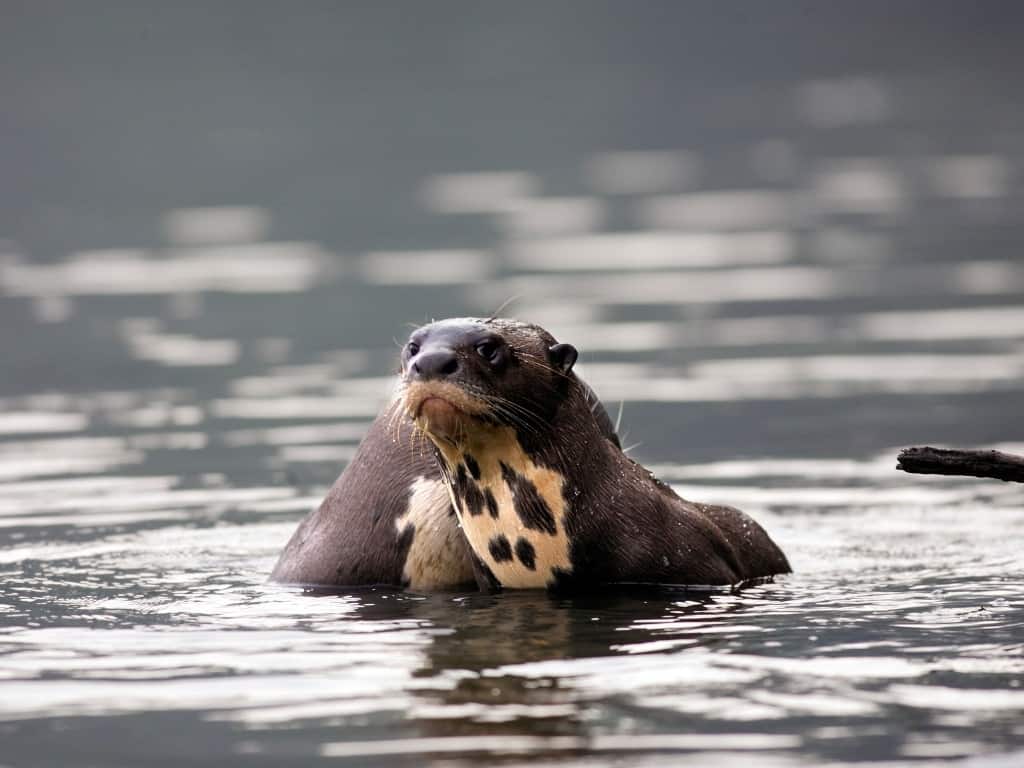
The giant river otter is a semi-aquatic mammal that lives in groups in South American rivers and streams. They feed on fish and crustaceans.
Unlike other brown animals, their fur helps them keep warm and dry while swimming in cold water.
Their fur comprises two layers: a short, soft undercoat and longer, waterproof guard hairs. The undercoat acts as insulation, keeping a layer of warm air adjacent to the otter’s skin. At the same time, the guard hairs repel water and keep the undercoat dry.
Brown wooly monkey
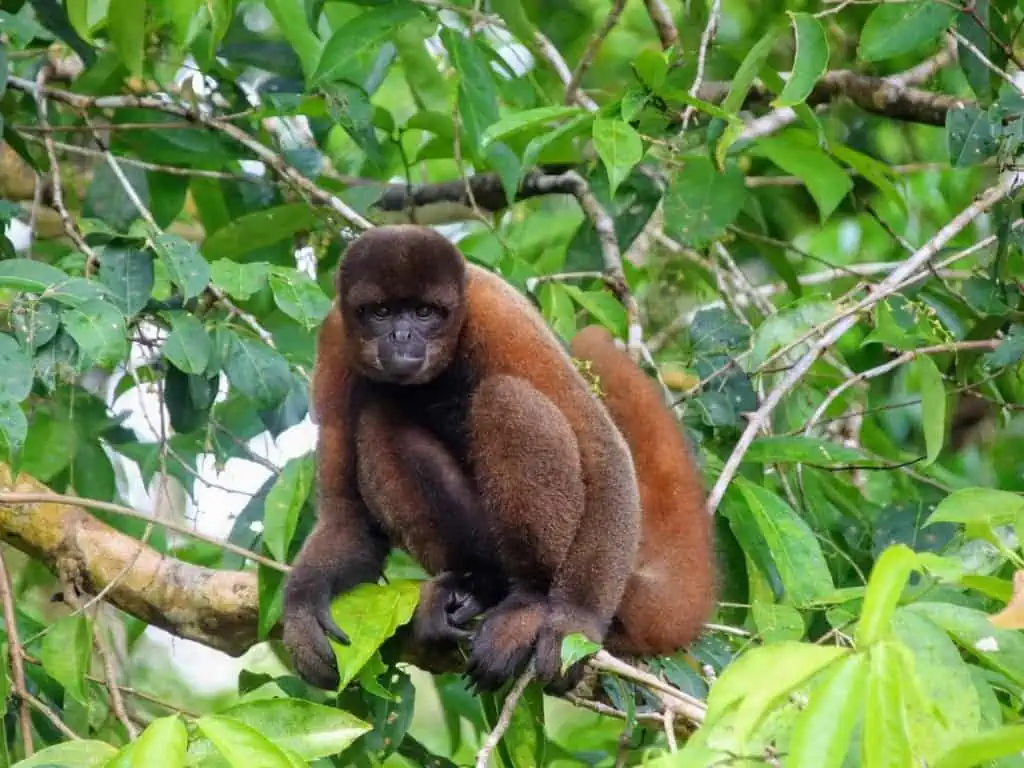
The woolly monkey, also known as the Humboldt woolly monkey, is a charming primate living in South America’s cloud forests. They have thick, woolly, brown fur and are distinguished from other species by their white beard.
Wooly monkeys are highly endangered due to habitat loss and hunting. For this reason, a few monkeys have been kept in captivity to keep the species alive. Thus, they have been included in the international endangered species program.
Northern raccoon
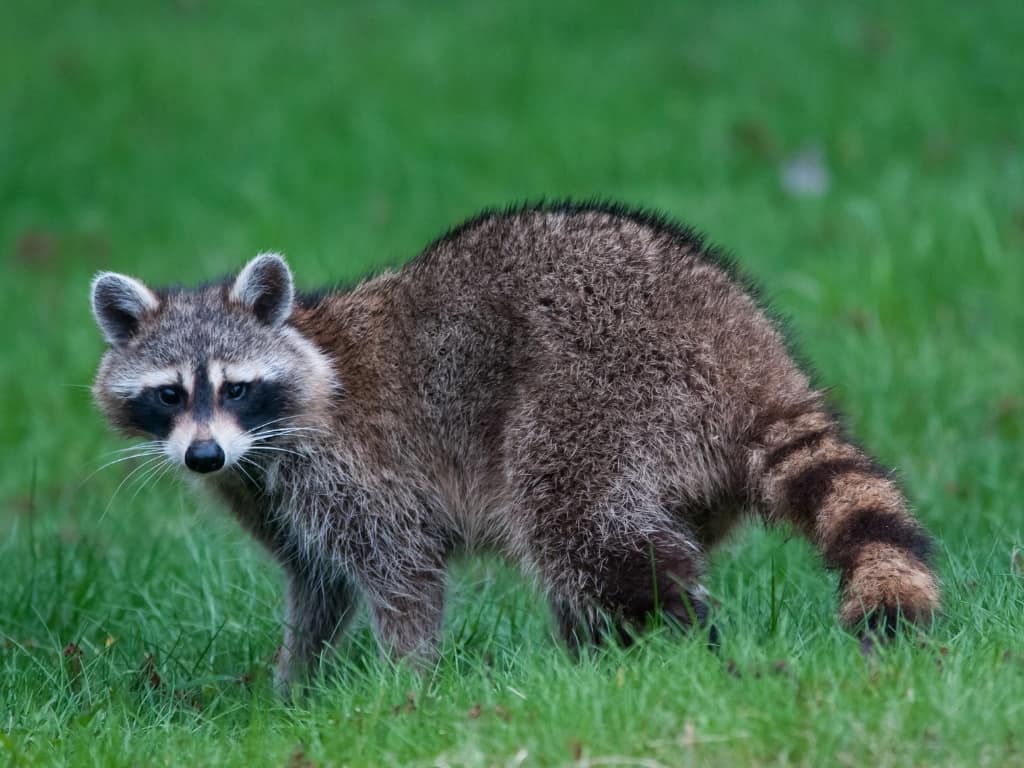
The northern raccoon is a highly intelligent mammal with distinctive brown fur that lives in North America, hence the name. In addition, these nocturnal creatures are omnivorous.
Because they often raid rubbish bins and gardens in search of food, they are considered pests, but this is just a misconception. They’re just peskier.
Wolverine
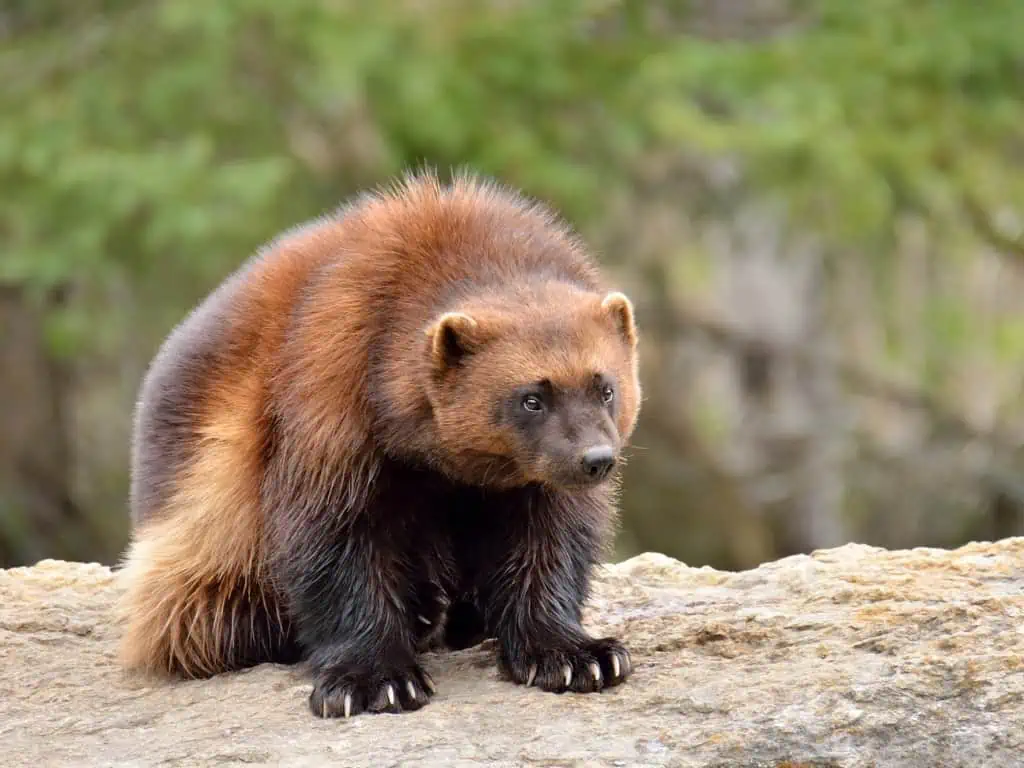
The guillemot is a cute but ferocious mammal with fur ranging from brown to shades of black or gray. They live in the colder environments of Canada and Alaska. However, specimens have also been found in Montana, Wyoming, and Idaho.
They are also known to be among the toughest mammals in the animal kingdom due to their strength and resilience. Thick fur, muscular strength, and a remarkable sense of smell are some of the qualities that make them survive in the harshest weather conditions.
So, it is one of the most resilient brown things to extreme weather conditions.
Maned wolf
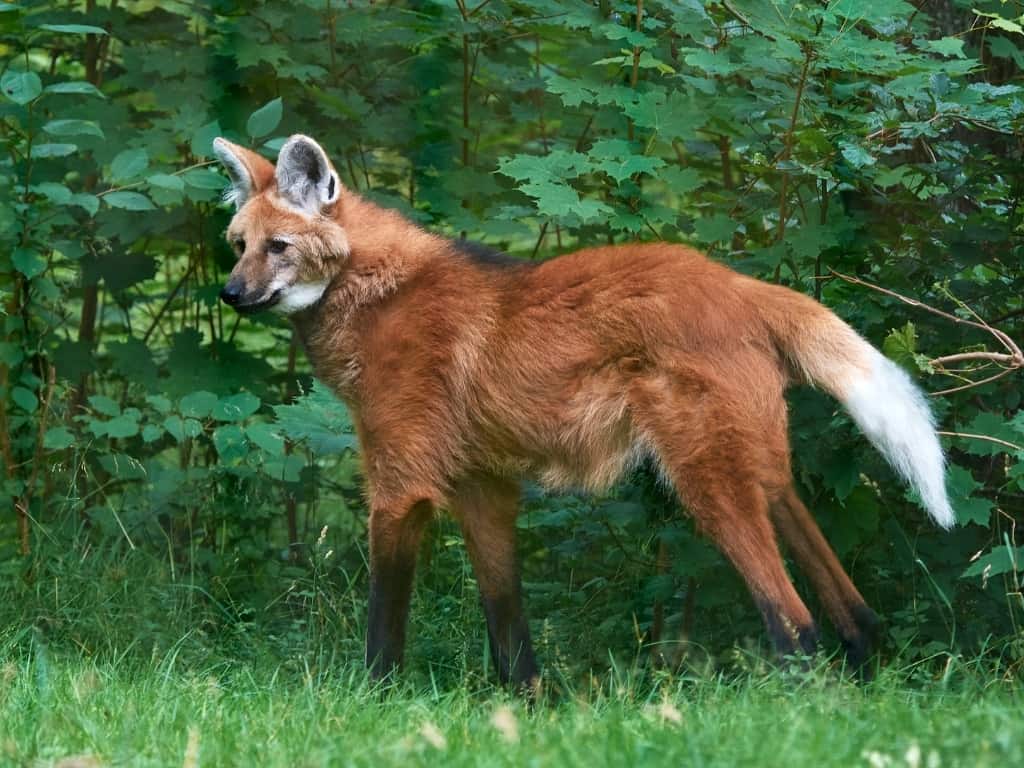
The Maned wolf is not actually a wolf, but the sole species of its kind. This large canine lives in the grasslands of South America and is noted for its reddish-brown fur and long black legs.
Cougar
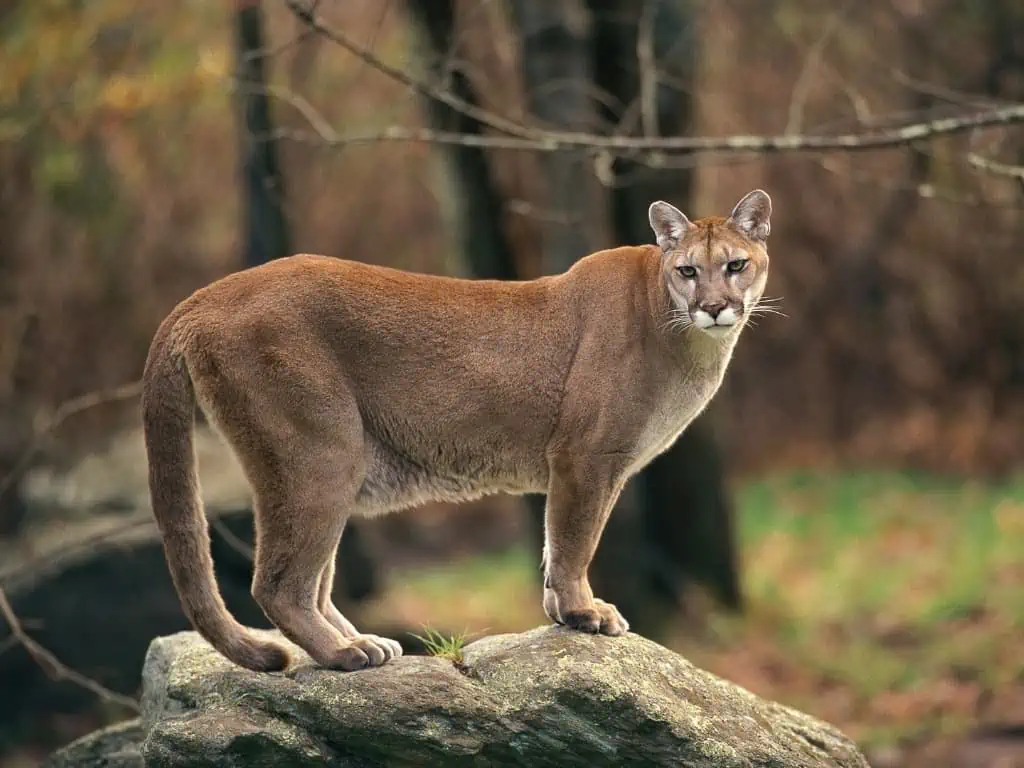
Cougar, also known as mountain lion, cougar, or panther, is North America’s second largest cat. It’s also one of the most beautiful naturally brown things.
In fact, cougar refers to the North American term, as opposed to puma, which is used for Latin American cats. Thus, there is no difference between pumas, cougars, and mountain lions.
Their fur color can range from reddish-brown to grayish-brown, and this helps them blend into their natural environment.
Little bunting
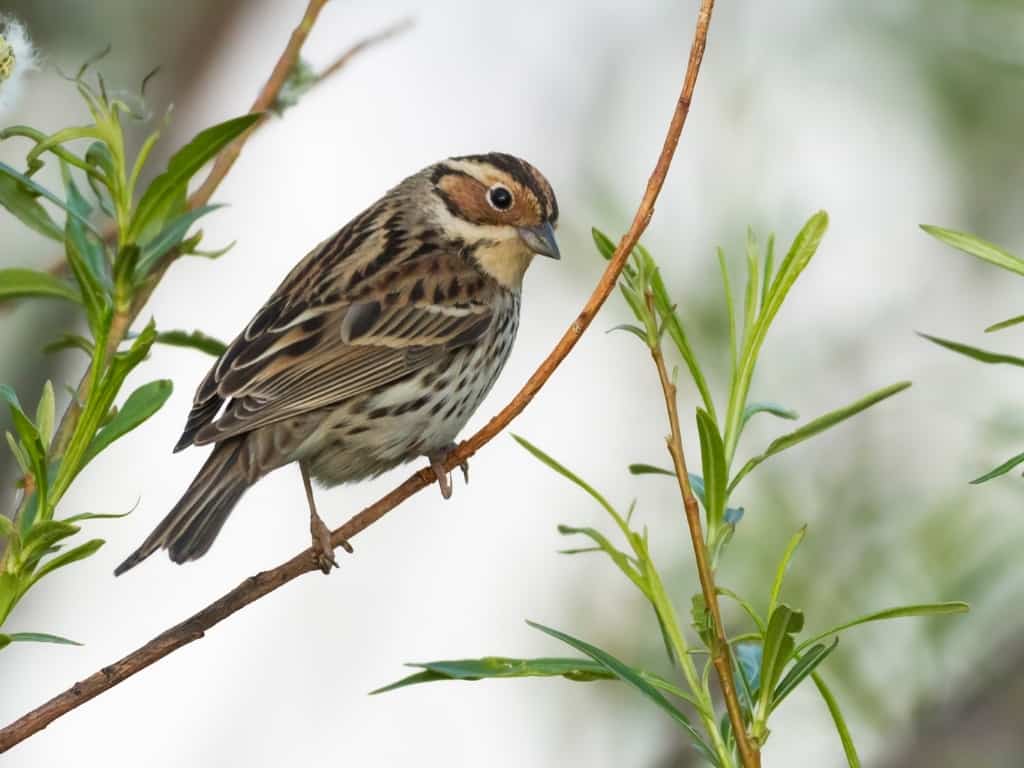
The little bunting is a small bird that lives mainly in Scandinavia and Siberia in the summer and in southern Asia during the winter. Known scientifically as Emberiza pusilla, it prefers tundra and taiga areas.
Kit fox
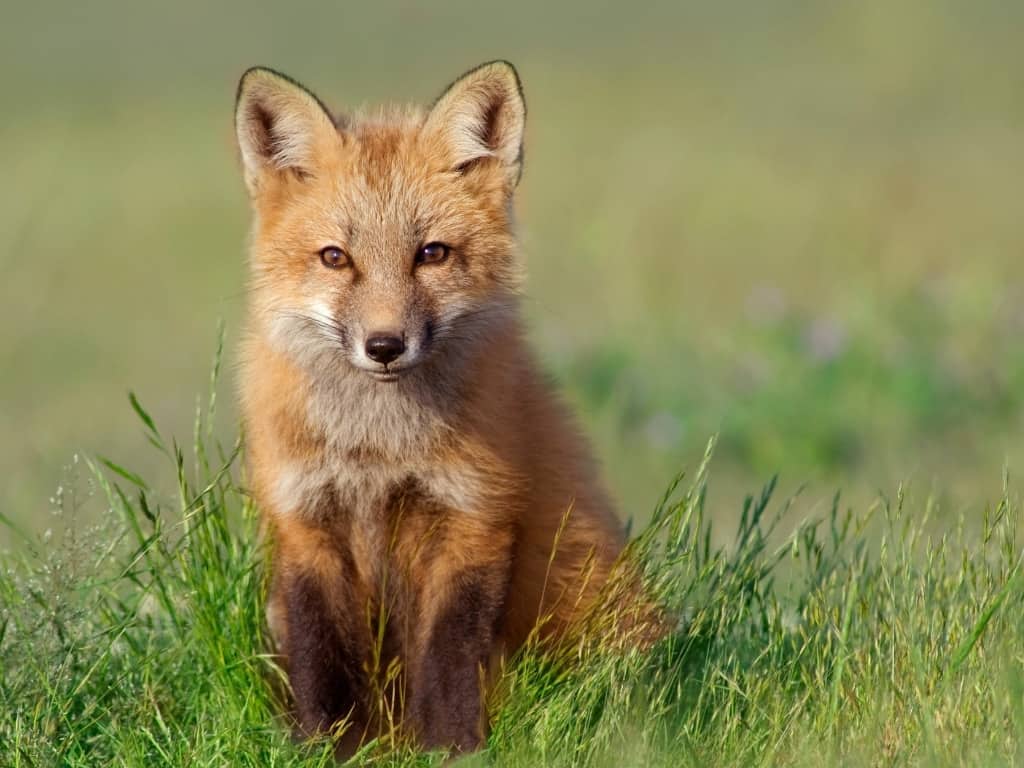
The kit fox is a small, desert-dwelling species of fox. It has a distinctive rusty brown fur that helps it camouflage itself in sandy desert terrain.
Kit foxes are nocturnal animals, and their large ears help them locate prey by listening to the sounds of rodents scurrying beneath the sand.
Bighorn sheep
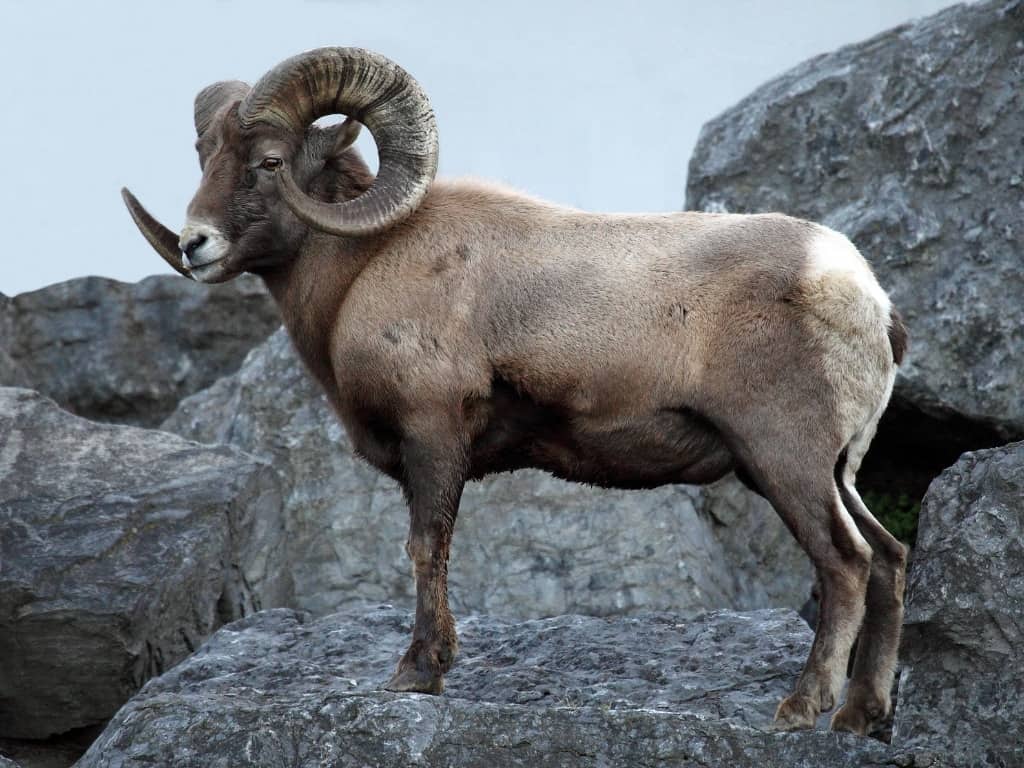
Native to North America, bighorn sheep, also known as Rocky Mountain sheep, are majestic creatures named for their impressive curved horns, weighing up to 30 lbs.
Despite their formidable appearance, bighorn sheep are an endangered species. Habitat loss, disease, and overhunting are some of the reasons for this situation.
Beaver

Beavers are semi-aquatic rodents with distinctive brown fur that helps them stay warm and dry in cold water. In this regard, they are similar to the giant otter ritter.
Moreover, they are also known for their large, flat tails, which are used for various purposes, such as slapping the water’s surface to warn other beavers of danger, and for balance and communication.
Impala

Impala is a medium-sized antelope known for their impressive jumping abilities. They can leap up to 32 feet (10 meters) in distance and over 10 feet (3 meters) in height.
Native to Africa, they live in open savannah and woodland habitats. Their coat coloring helps them camouflage themselves from predators such as lions, cheetahs, and leopards.
In addition, impala fur is made up of a dense layer of hair, which provides insulation and helps regulate their body temperature in hot and cold weather.
Kiwi bird
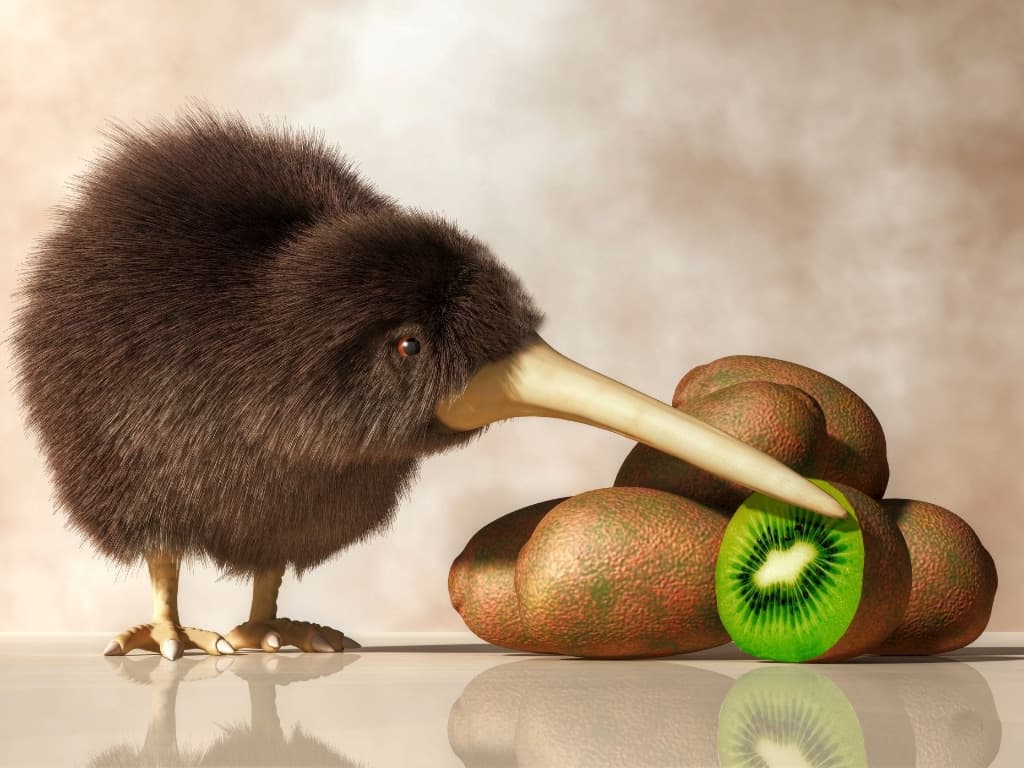
Kiwi birds, native to New Zealand, are flightless birds because they have a unique type of feather called a “hair-like” feather, which is very different from the feathers found in most birds.
They provide excellent insulation, helping the kiwi maintain body heat in the cold, wet forests where it lives. However, these feathers do not allow them to fly. It’s one of the most interesting things that brown is in nature.
In New Zealand, there are many flightless birds. That’s because humans only populated this area 1000 years ago, and before that, there were no mammals to prey on them.
Kiwi birds are endangered by habitat loss, predators, and fragmented populations. It is estimated that there are about 68,000 left worldwide.
Western banded gecko
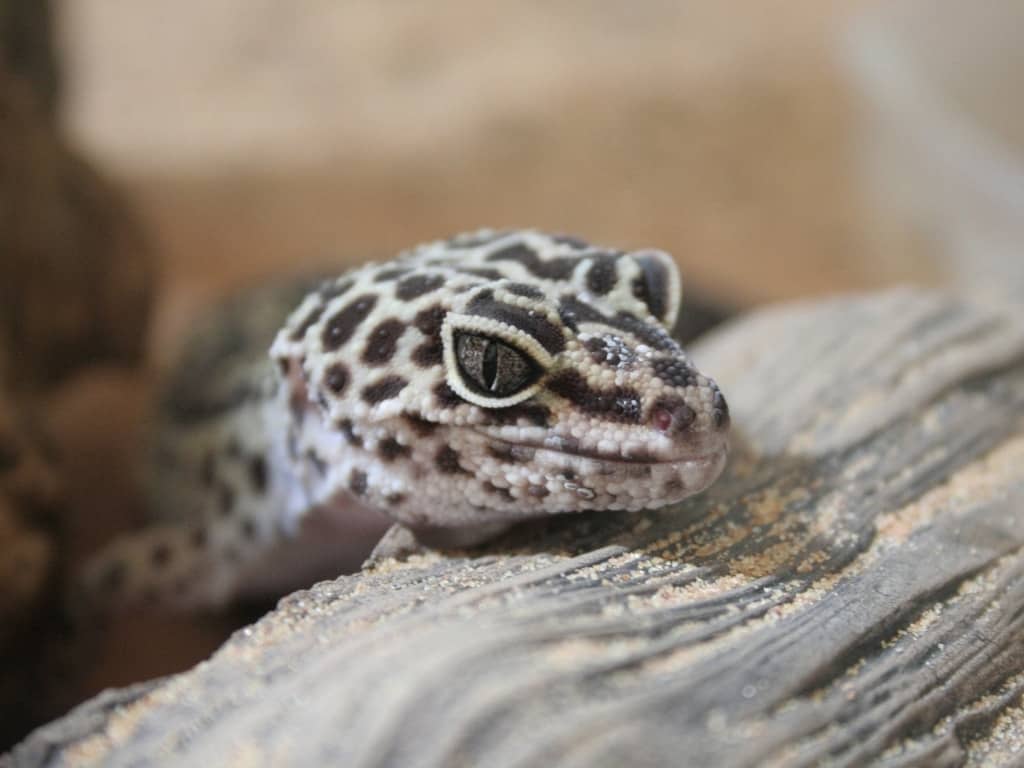
Western banded gecko is a small lizard species native to the southwestern United States or northern Mexico, living in arid deserts and desert grassland.
They love humidity, so keeping them in a controlled environment with humidity between 40-60% is preferable.
Nature has endowed them with a skin substrate similar to sphagnum moss, which helps them retain moisture.
Western banded geckos feed on crickets or dubia roaches. While the juveniles feed daily, adults eat every other day.
Cedar waxwing

Cedar waxwings are handsome multi-colored birds with yellow on the belly, reddish-brown around the neck and head, and gray on the rest of the body.
They have a distinctive crest on their head and a black mask around their eyes. Their wings are a combination of brown, gray, and red.
White-tailed deer
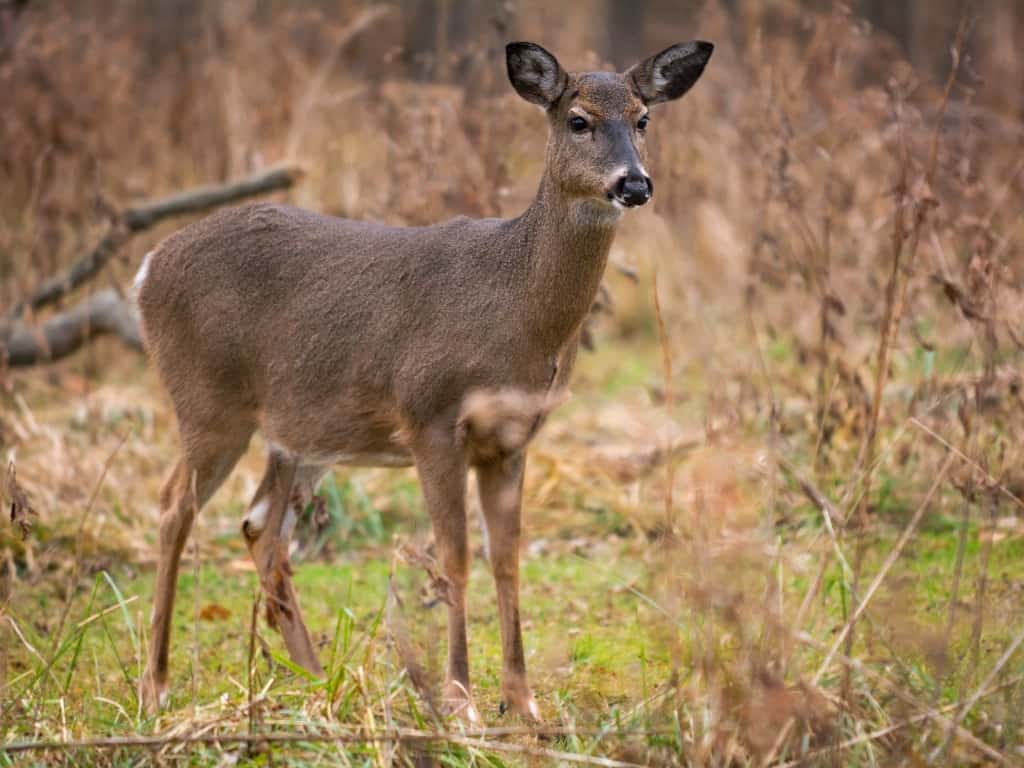
The white-tailed deer is a common species found throughout most of North America. As the name suggests, it has a white tail, often raised as a warning signal to other deer.
They are known for their graceful leaps, which can take them up to 10 feet tall and 30 feet long.
This deer changes color depending on the season. Its fur is usually reddish-brown in summer and grey-brown in winter, providing good camouflage in their wooded habitats.
Common buckeye
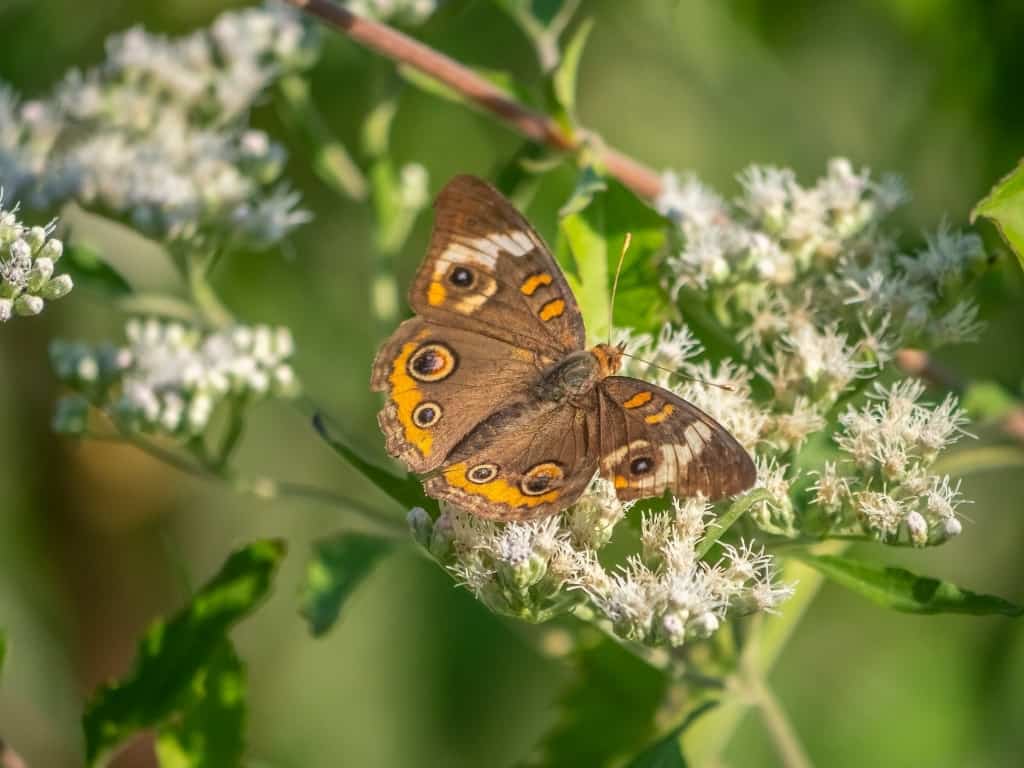
Although many butterfly species are called “common,” this term distinguishes it practically from the tropical buckeye (Junonia everete) or mangrove buckeye (Junonia genoveva). However, the tropical buckeye has a similar appearance to this one.
The Common Buckeye butterfly (Junonia coenia) is brown above, with orange bars on the forewings and large eyes outlined in orange.
Boa constrictor
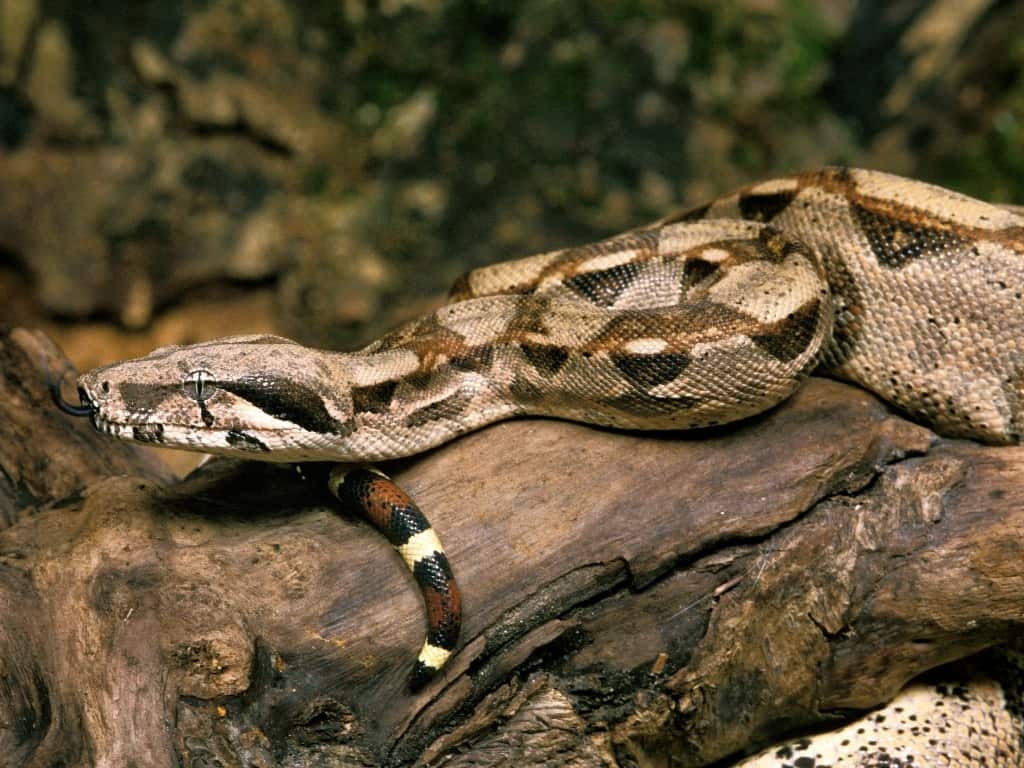
A powerful and non-venomous snake, the boa constrictor lives in the tropical climates of Central and South America. It hunts only at night, and its name indicates its mode of predation: constriction.
Interestingly, they don’t eat for several weeks after a rich meal. Moreover, a mother boa can give birth to 60 babies at a time.
Its color is a mix of brown, cream, and gray, with reddish-brown saddles.
Norman cob horse
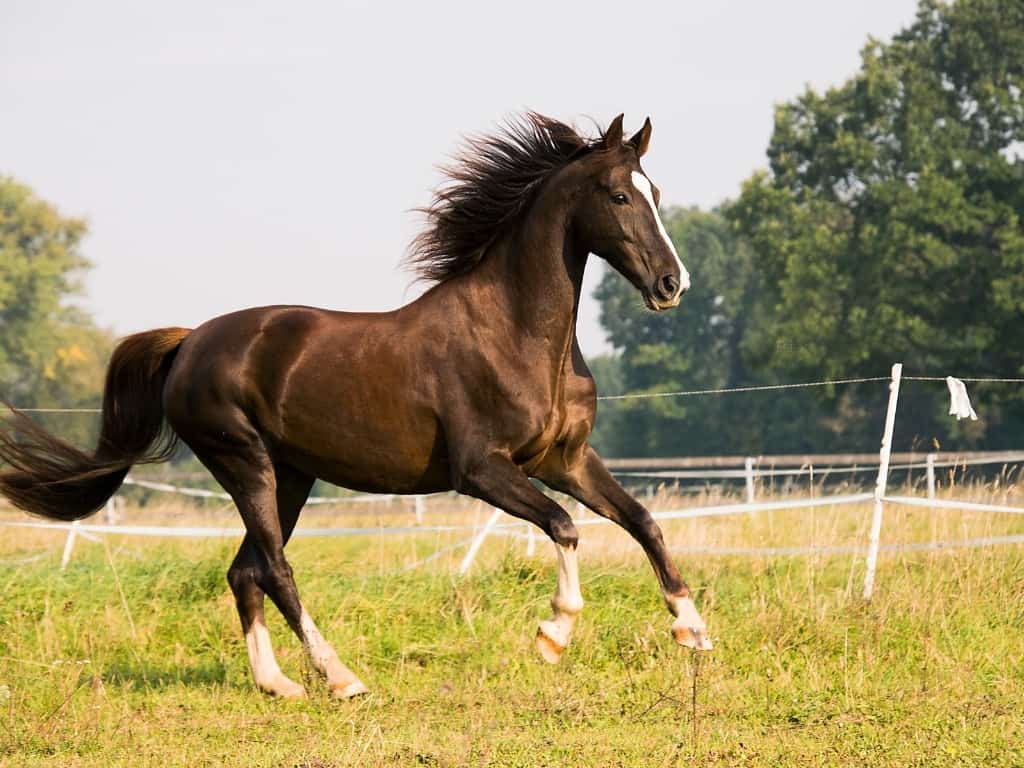
The Cob Normand is a mid-sized light draft horse breed whose name suggests its origin. It is native to the province of Normandy in France and is used for riding, driving, vaulting, and farm work.
This breed was developed in the early 1900s and are the most suitable horses for beginners.
Spectacled owl
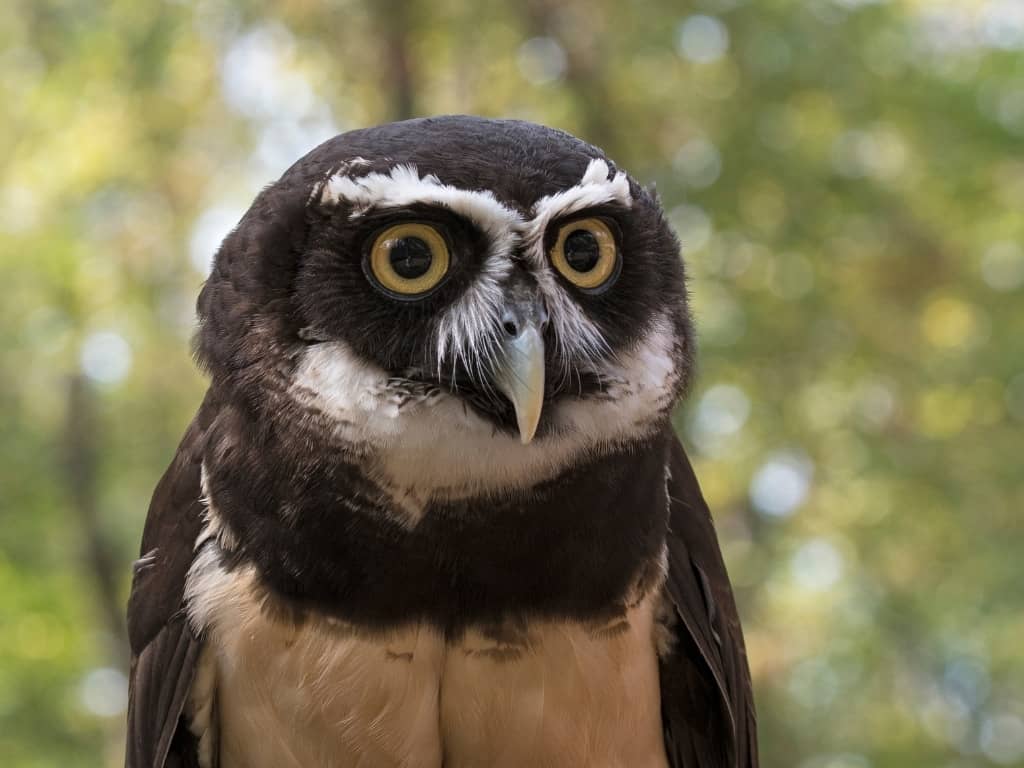
The spectacled owl is a nocturnal bird of prey native to the Neotropics, so named because of the white feathers surrounding its eyes. The spectacled owl can reach a height of 17-19 inches (43-48 cm) and weigh between 0.7 and 0.9 kg.
This is the largest tropical owl species, and it lives in tropical lowlands and foothills in humid evergreen forest.
Eastern imperial eagle
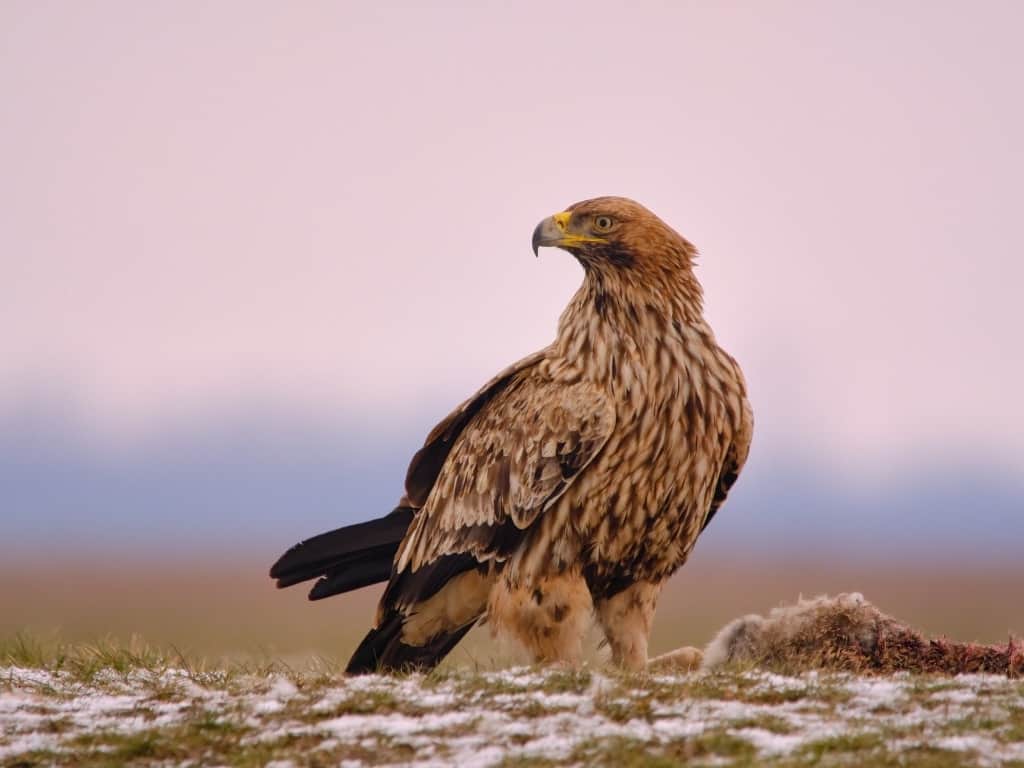
The Eastern imperial eagle is a huge, graceful predator that breeds in southeastern Europe, western Asia, and central Asia. Its dark brown plumage aids in camouflage.
The Iberian imperial eagle is one of the world’s rarest birds, with an estimated population of 3500 to 15000 individuals.
However, they are migratory and spend the winter in Africa, the Middle East, and East Asia.
Chocolate labrador

The chocolate Labrador is a playful and friendly dog considered one of the best dog breeds for families. However, it requires a lot of physical and mental stimulation.
Moreover, it is the rarest type of Labrador.
This type of Labrador is brown but also comes in black or golden. The Golden Retriever is not the same as the Golden Labrador Retriever. Labradors are from Canada, whereas Golden Retrievers are from Scotland.
European mink
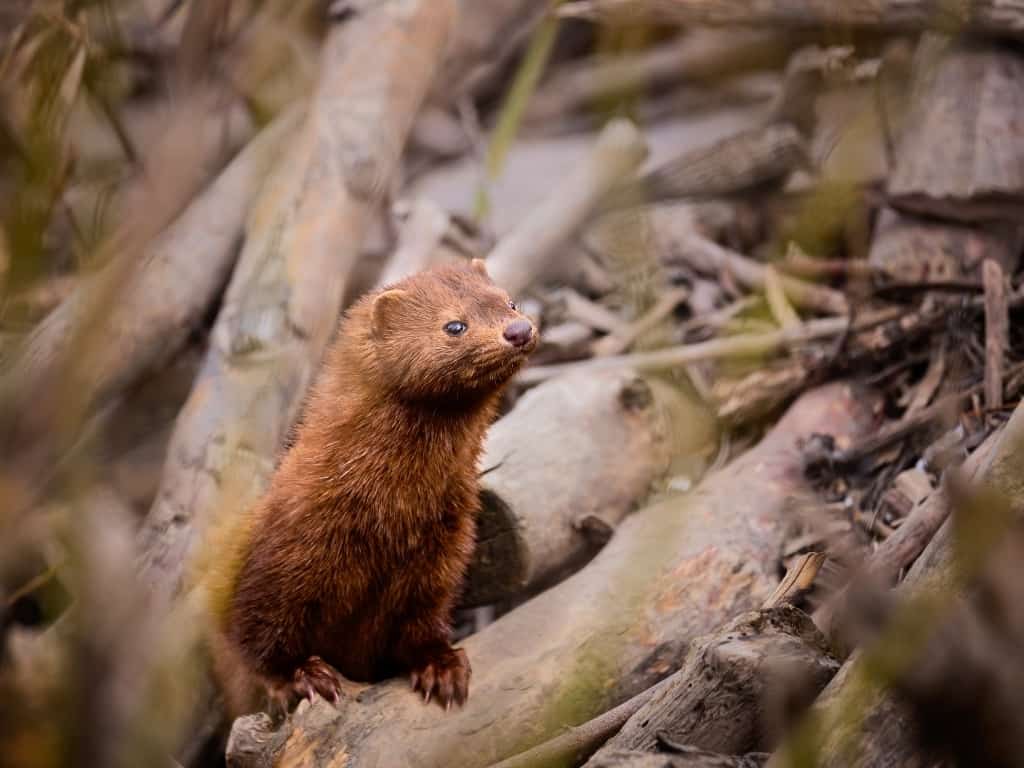
The European mink is a cute small, semi-aquatic brown mammal valued for its luxurious fur. It feeds on rabbits, frogs, mice, salamanders, fish, muskrats, crayfish, and voles.
This stunning mammal can swim up to 1.8 feet in one second and dive as deep as 16 feet (4.8 m).
Unfortunately, the European mink is endangered, with fewer than 5000 individuals worldwide.
Bald uraki
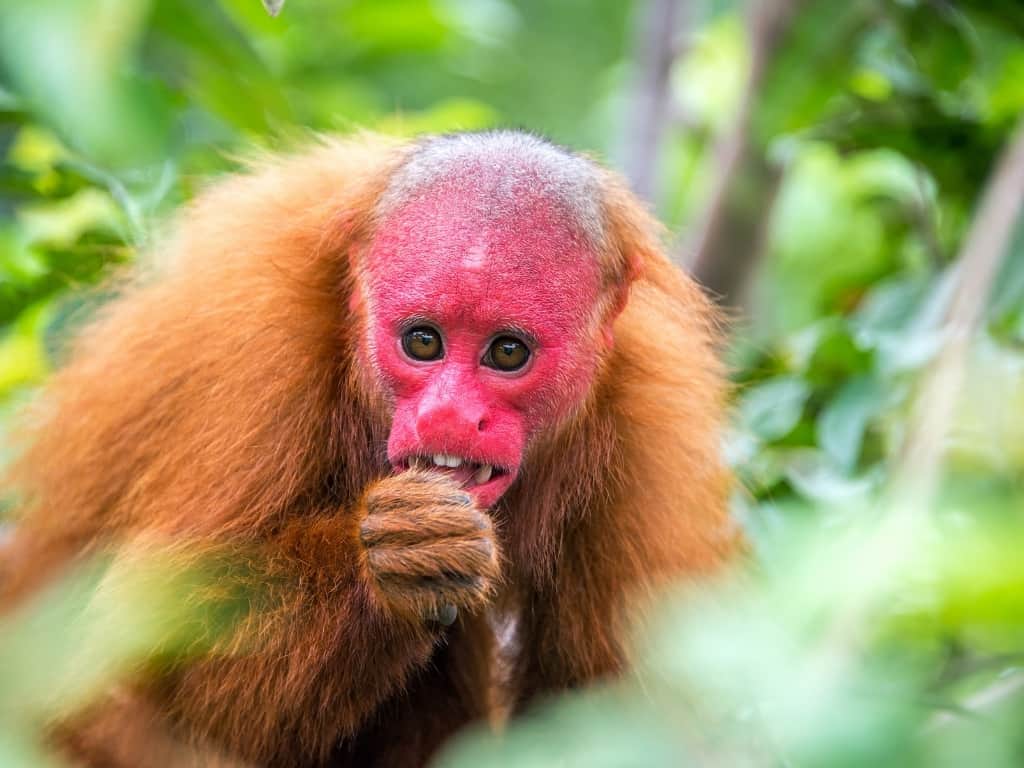
Bald Uakari is a small South American monkey found in the Amazon River Basin. As the name implies, this red-faced monkey has a bald head. Its face is a brilliant shade of red, resembling crimson.
They live up to 20 years, weigh between 2.75 and 3.45 kg and sleep only in groups of 500 to 200 individuals.
American bison
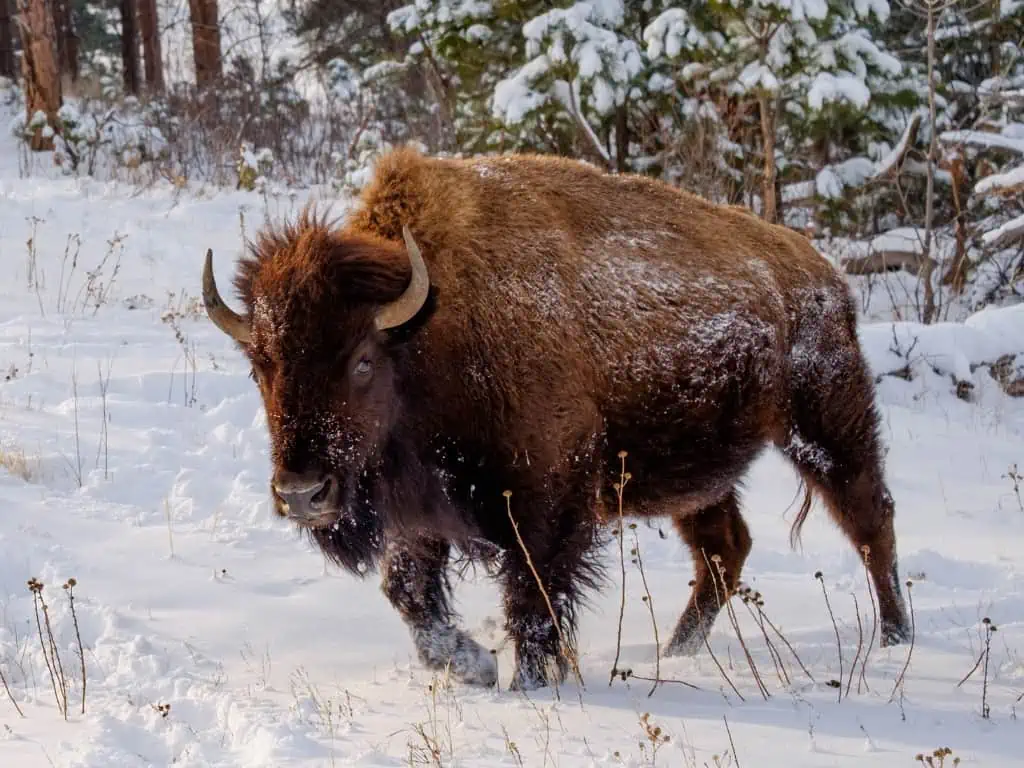
Native to North America, the American bison is the national mammal of the United States since 2016, being also the largest mammal on the continent.
It is one of the heaviest brown things in nature. Males weigh up to 2,000 pounds and stand 6 feet tall.
They are generally dark brown in hue, almost black when a fresh coat grows during the summer.
The terms American bison and buffalo are interchangeable, except that bison is a North American term. In contrast, buffalo is derived from the French word “boeuf,” which means beef.
Brown cat
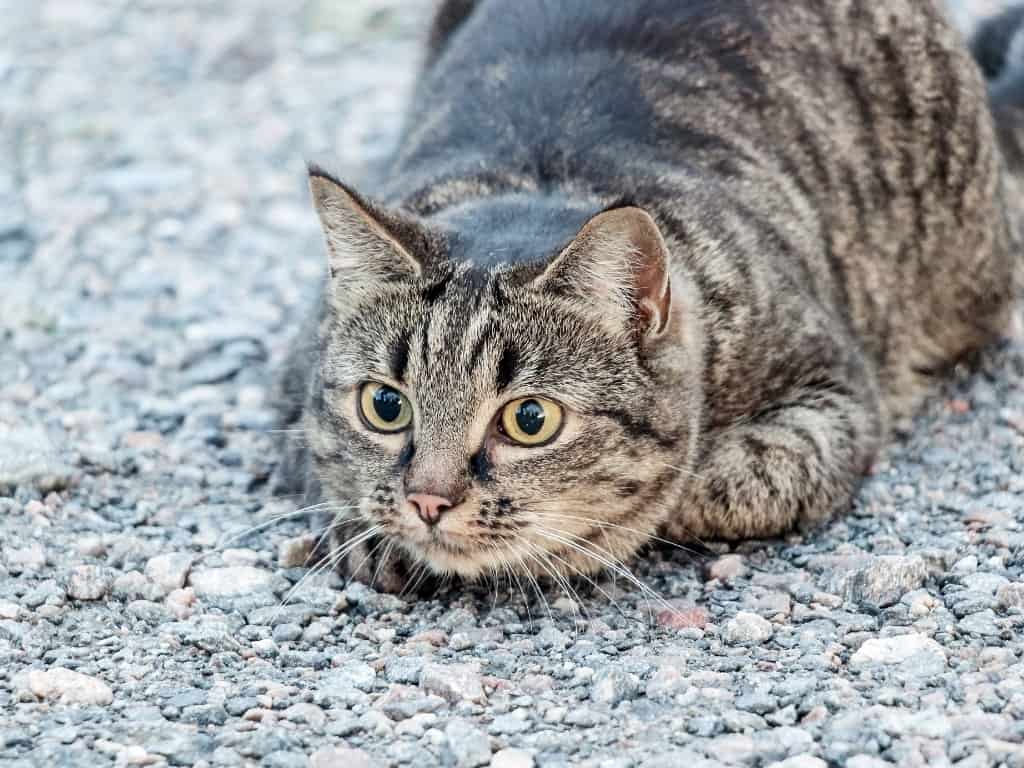
The brown cat refers to brown cat breeds such as Havana brown, Burmese, Devon Rex, York chocolate, Persian or British shorthair. They all come in lovely colors like chocolate brown.
Did you enjoy this article about things that are brown in nature? Please help us spread the word. Share it with your friends who might enjoy it as well.

